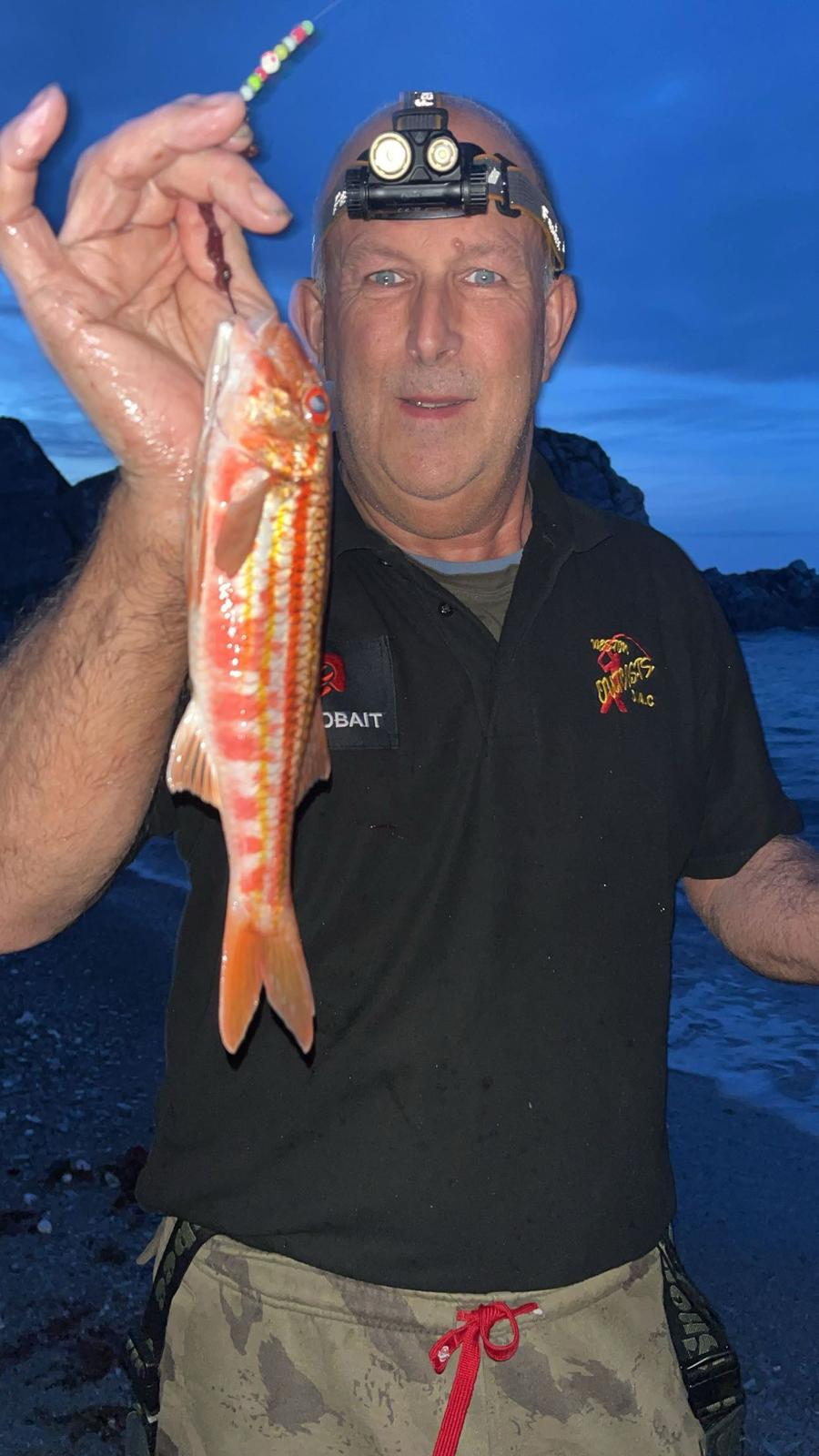Combe Martin SAC member Daniel Welch took time out from his charter boat Predator 2 to target grey mullet whilst inclement weather restricted boat forays. He was rewarded with over half a dozen fish over 3lb, the best a fine specimen of 4lb 6oz.
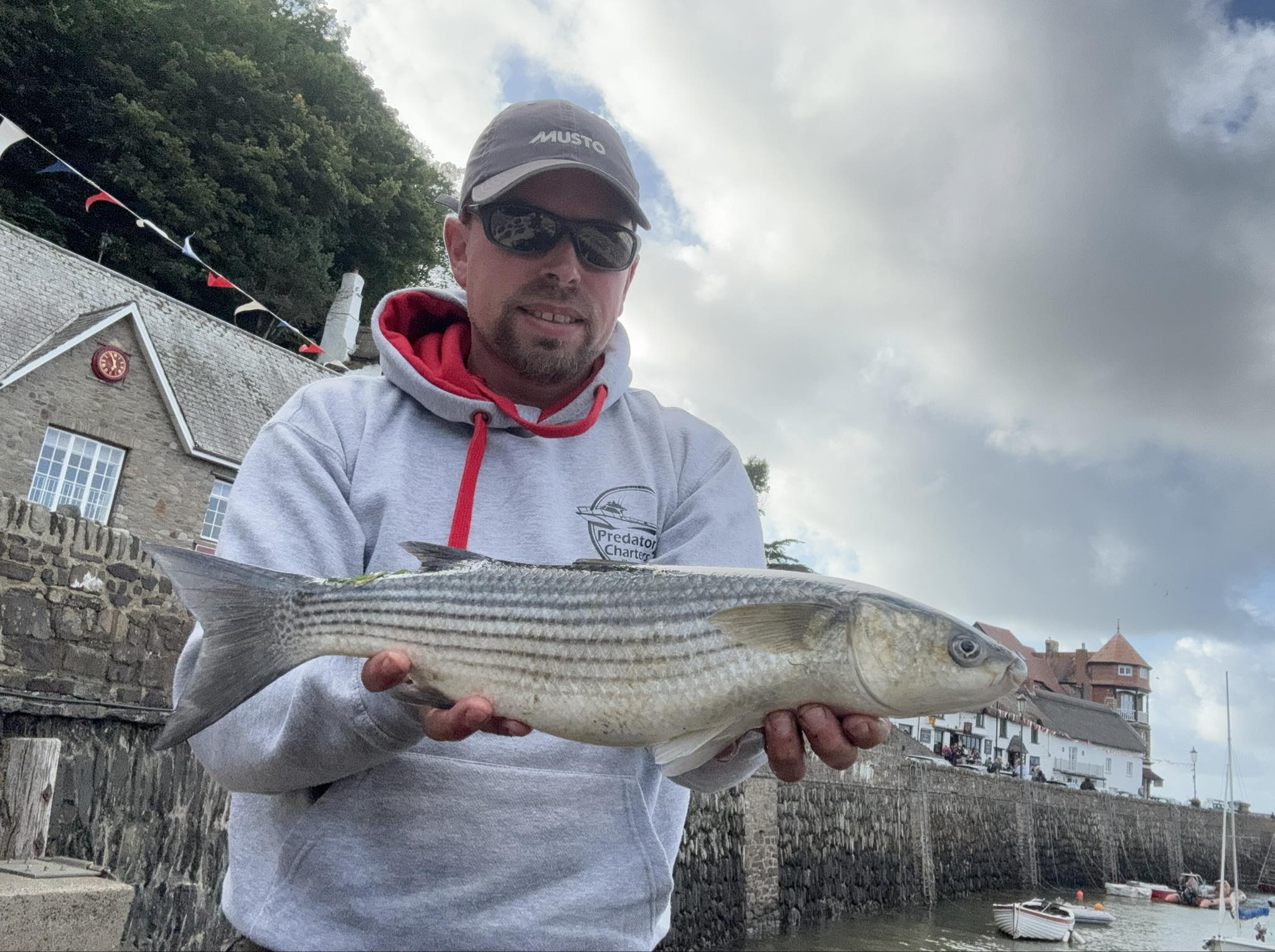
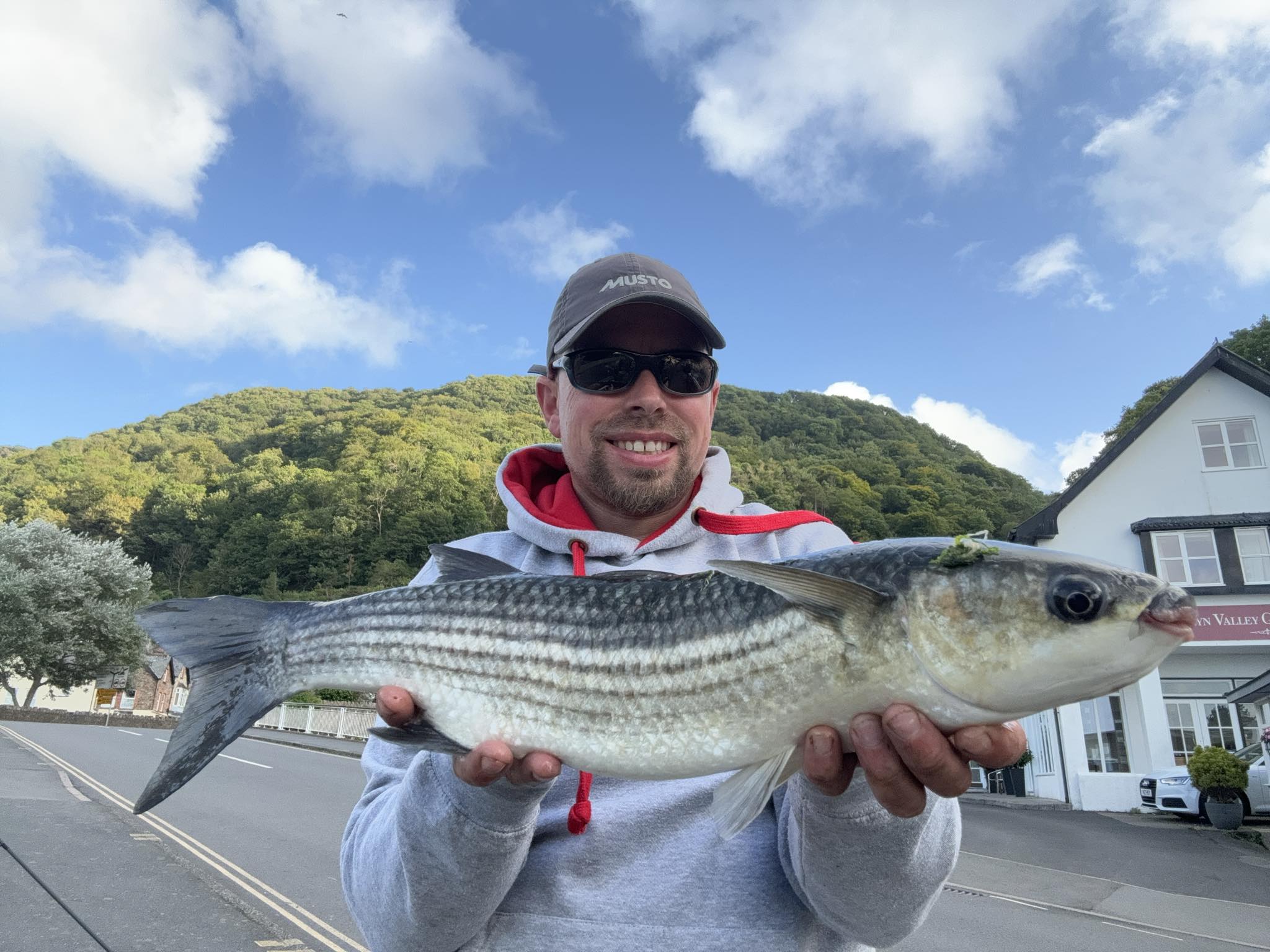
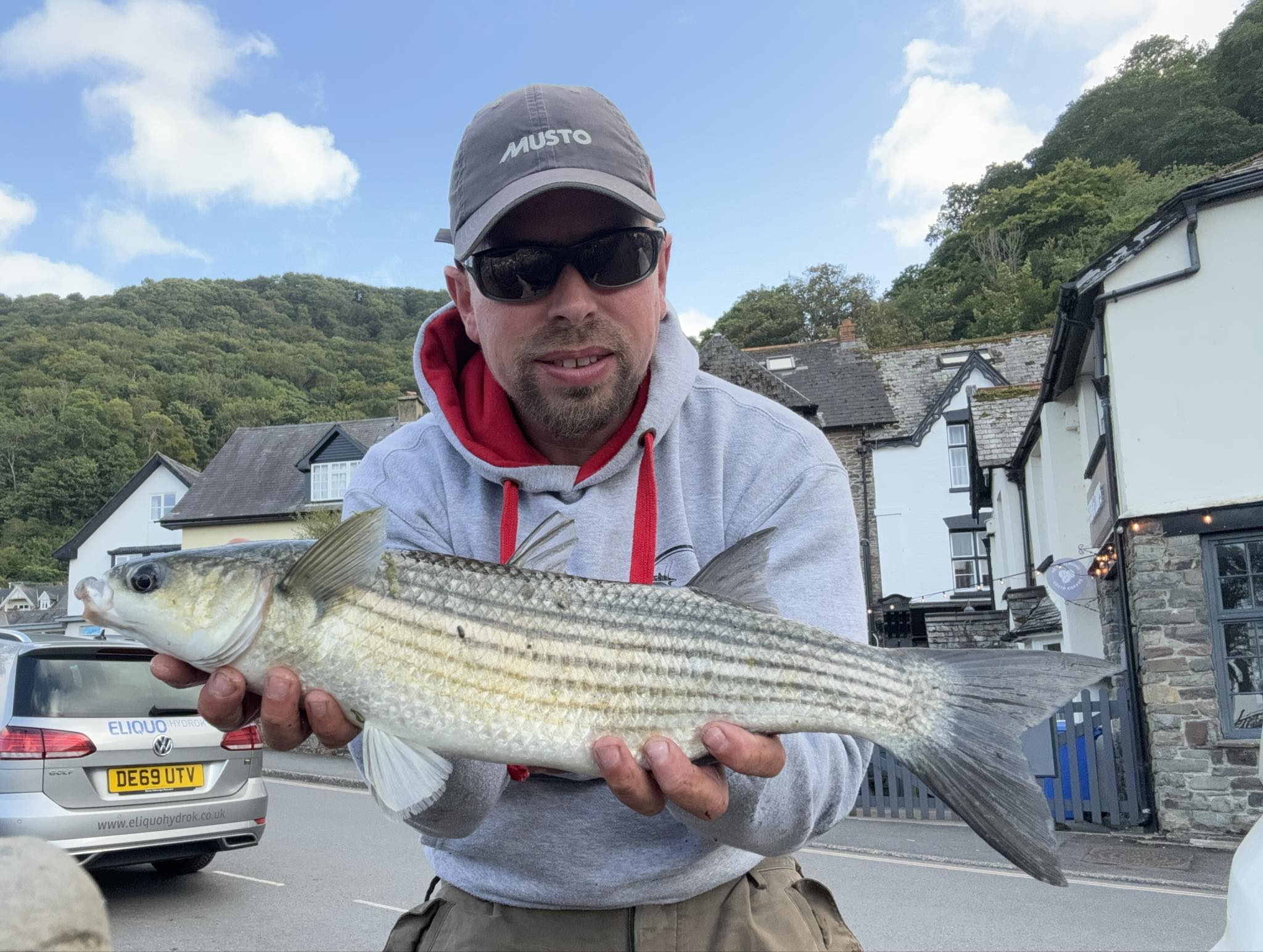
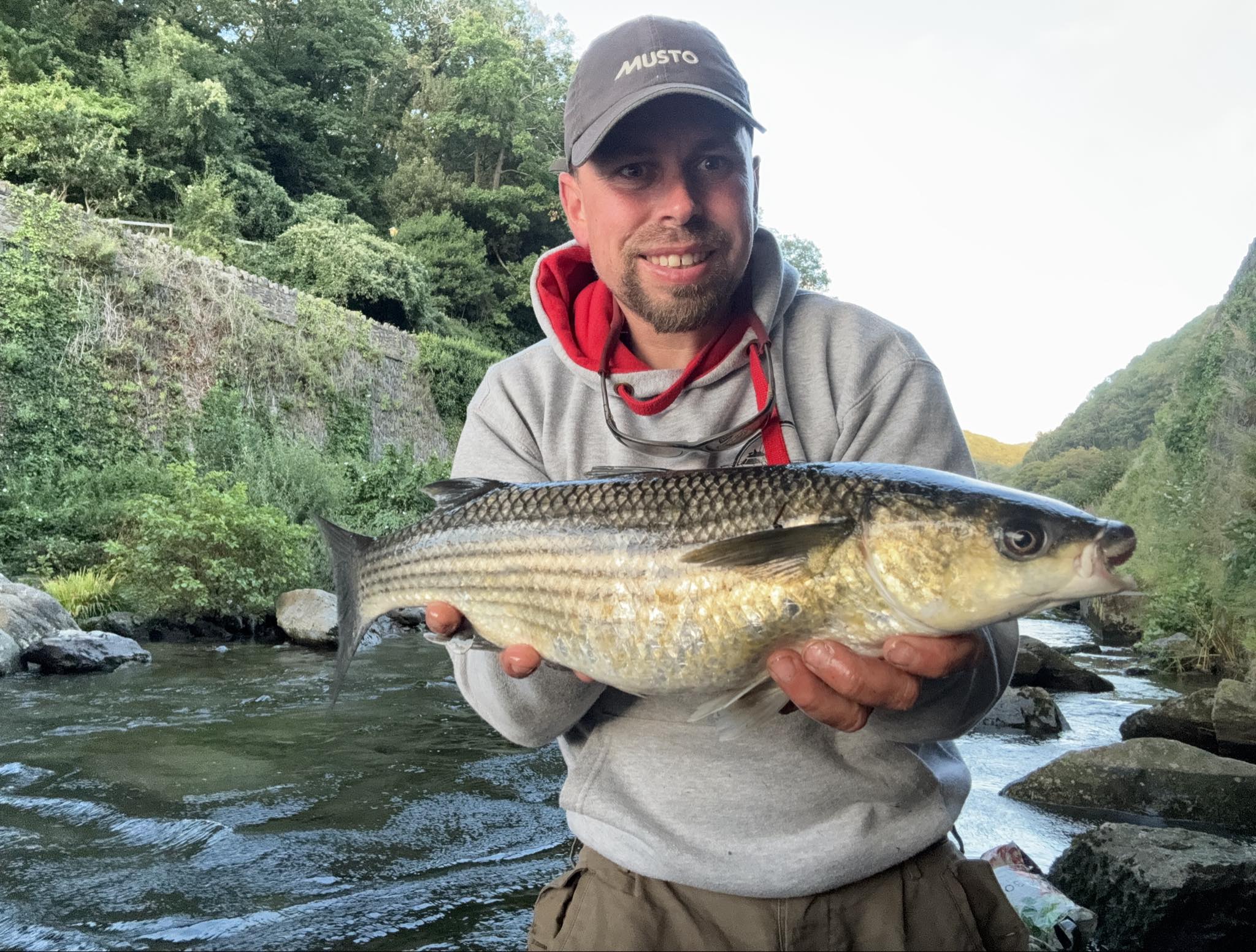
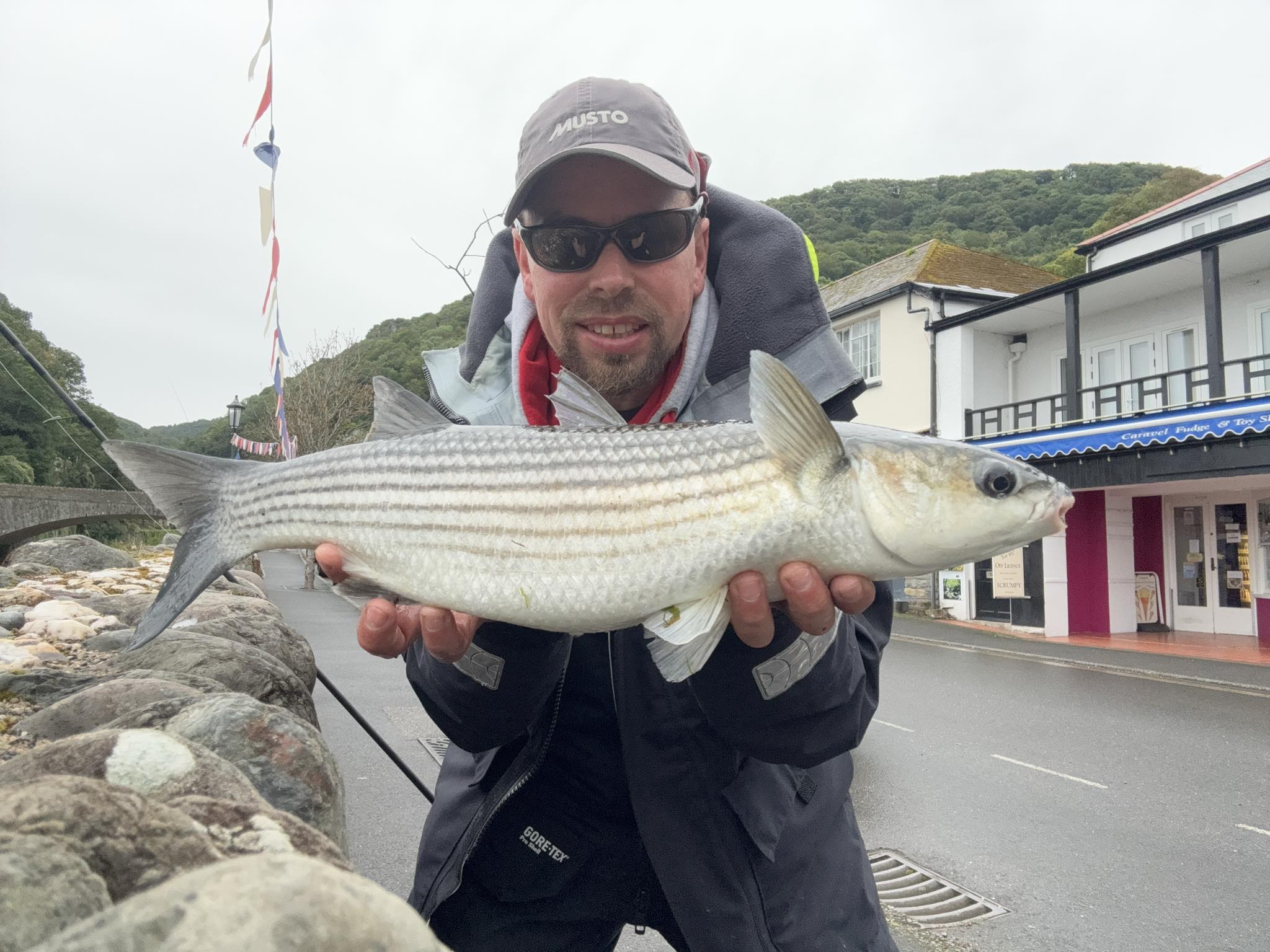


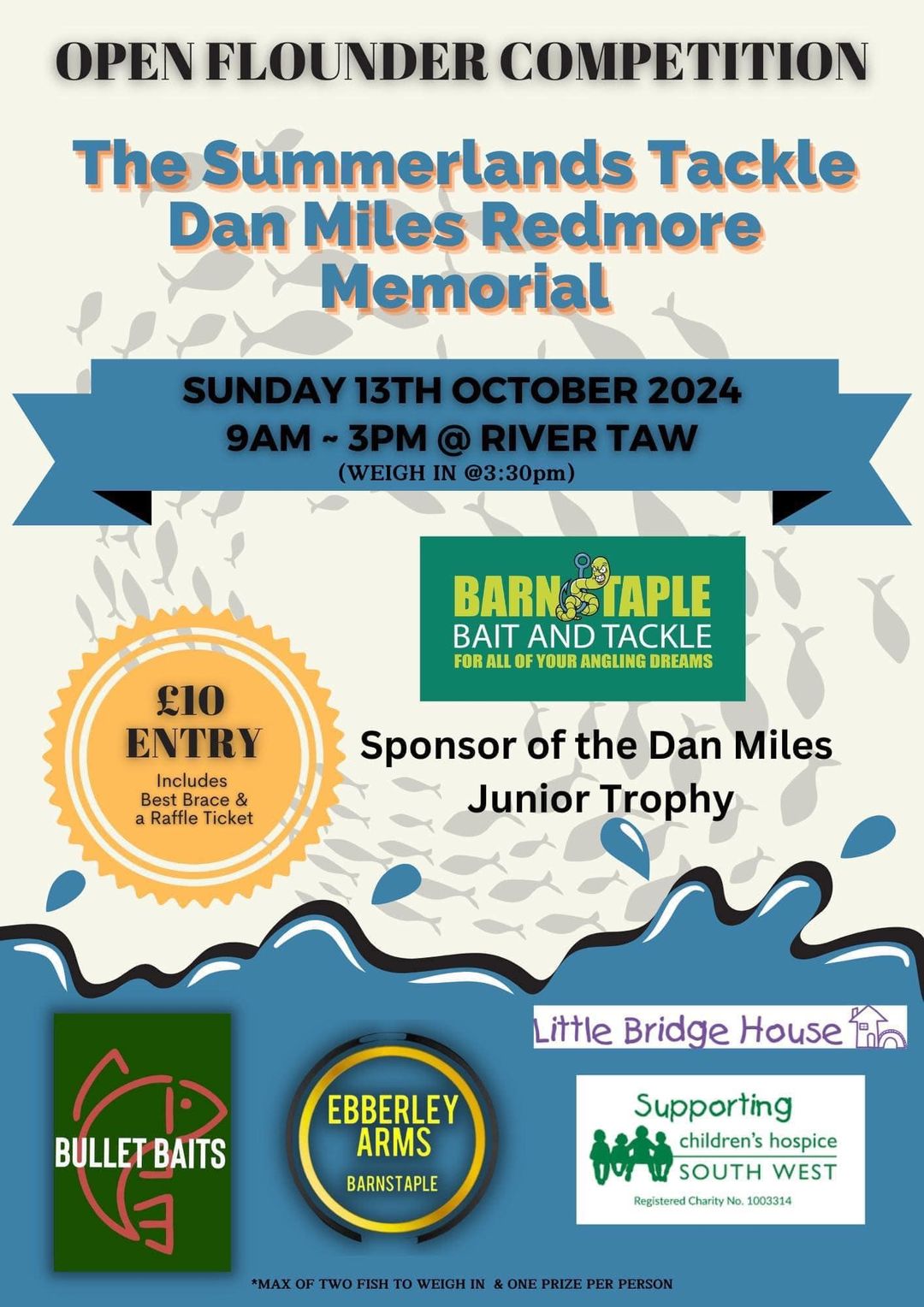


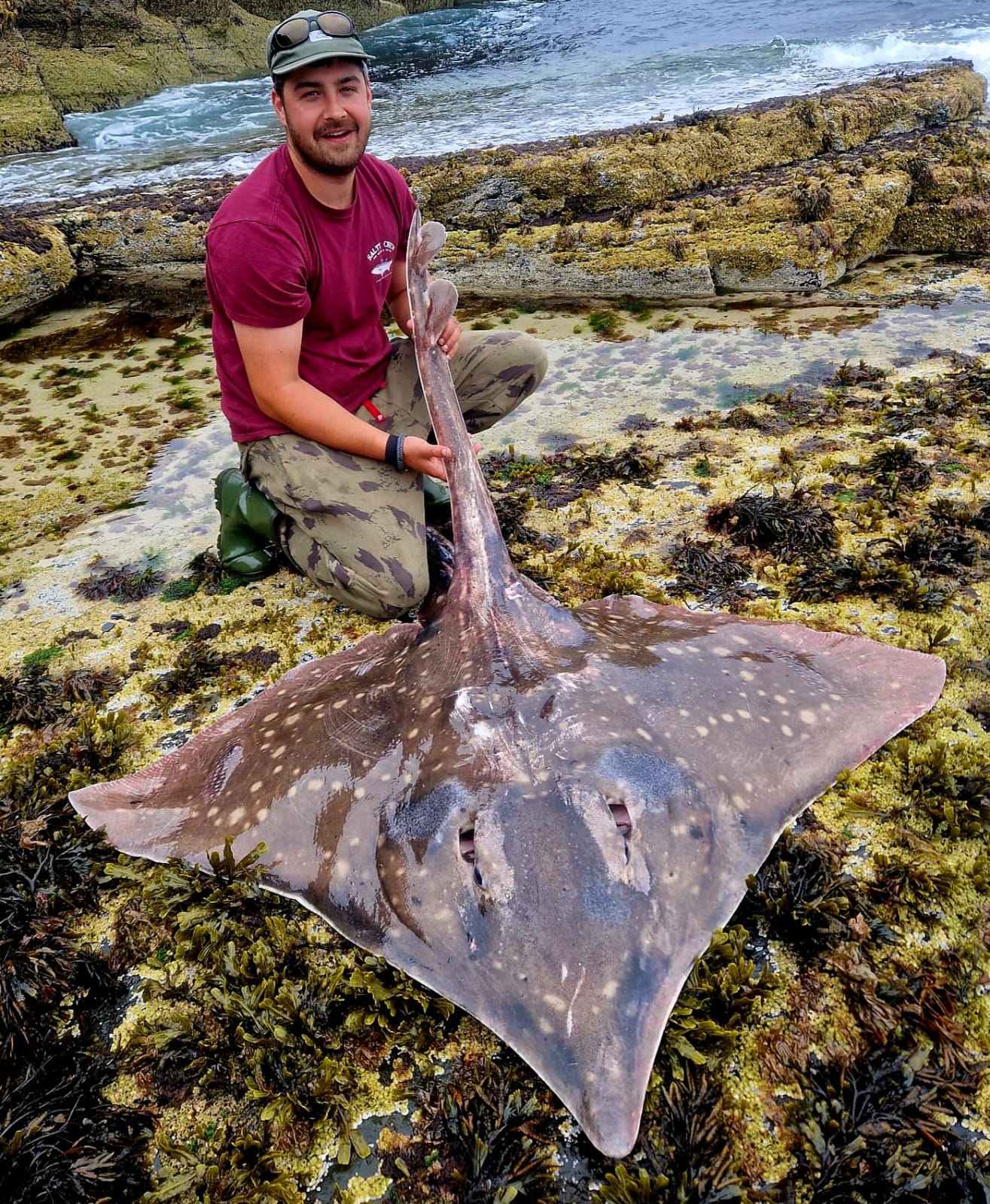
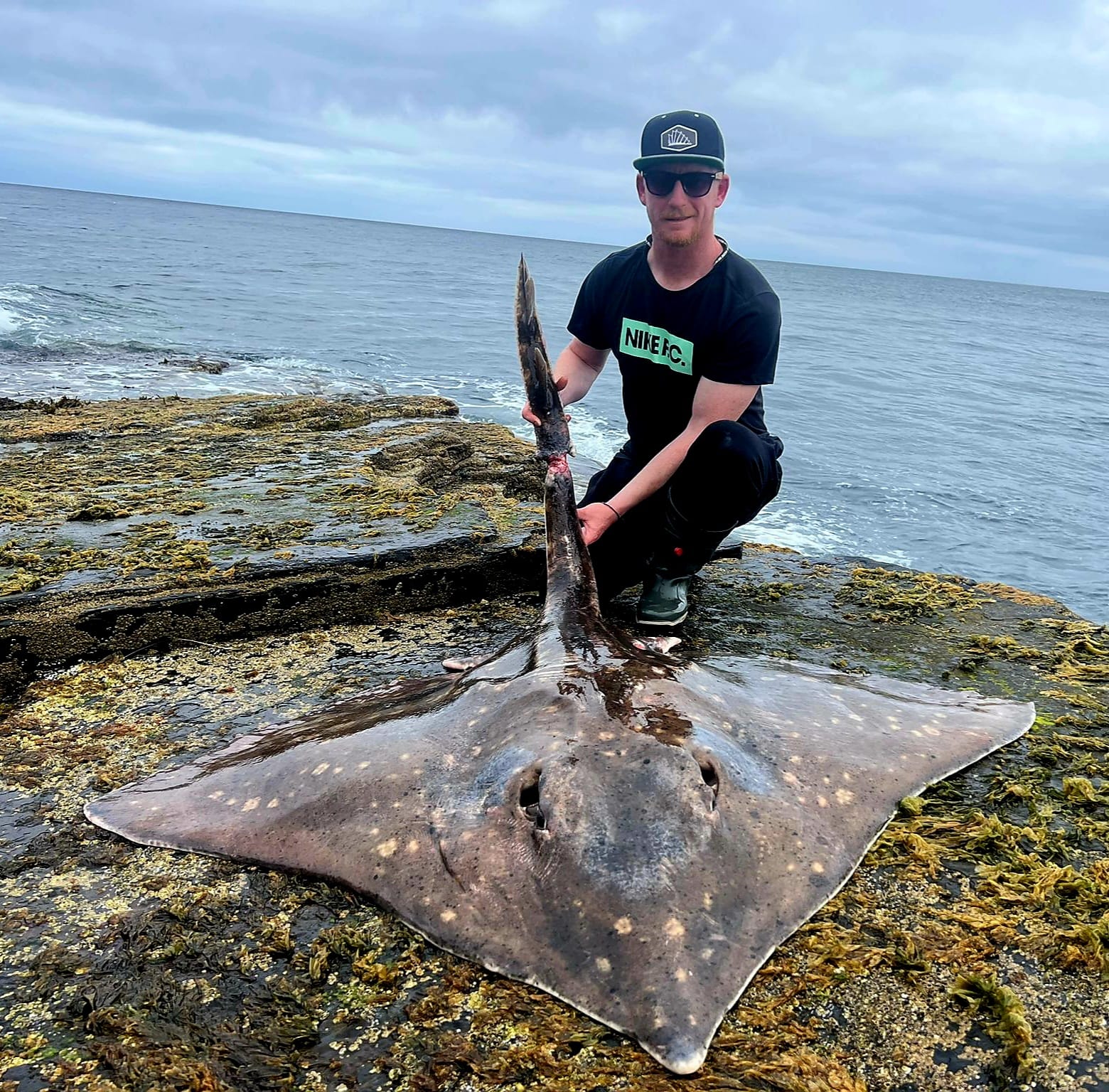

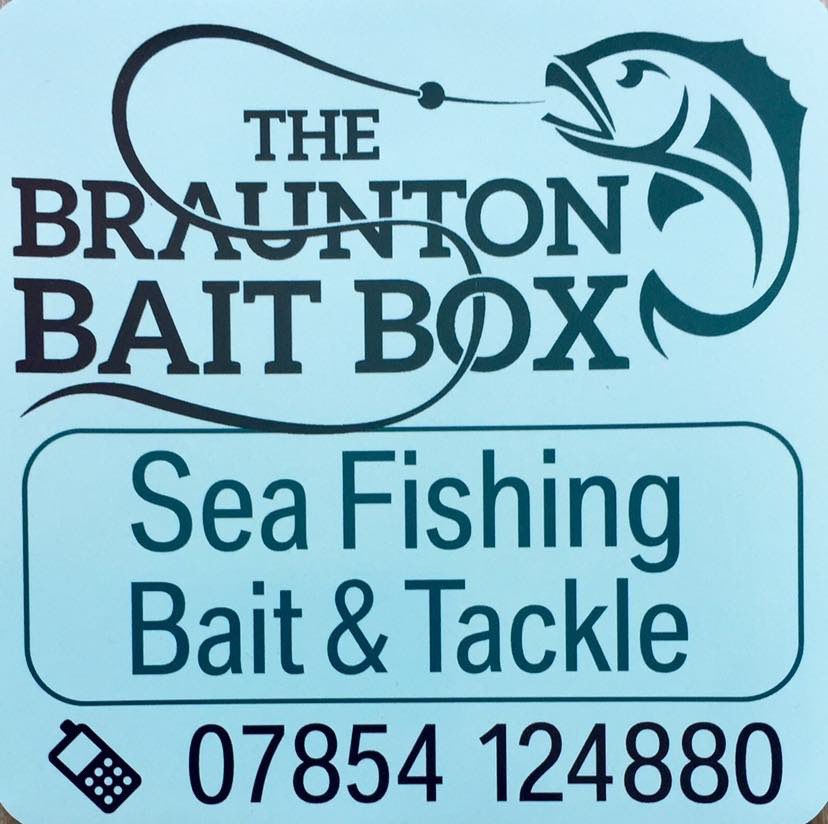
With strong Southerly winds forecast the planned mates trip on Predator 2 was in the balance so I was pleased when Dan Welch suggested we head up channel to fish in the shelter of Exmoor’s high cliffs. Toby Bassett and I both agreed with Dan that this was a good idea and so at 8:00am Toby and I climbed on board surprised to find that we were the only two joining Dan for the day.
It was good to have this rare chance to have plenty of space on a charter boat and to be heading up channel to grounds that I have a close affinity with having fished them many times over the years.
Dan was as always full of ideas for the day ahead and discussed a wide range of options that we could try. This was an ideal opportunity for Dan to try out a few new marks for different species. It was also perhaps good to have two anglers on board who fish in different ways. Toby is very much focussed on his species fishing whilst I tend to target larger specimens if I get the chance.
We steamed out of Ilfracombe beneath grey skies and it was good to watch the dramatic coastline pass by. The familiar shoreline of Watermouth, Combe Martin Bay and then the dramatic and towering cliffs that plunge to the sea beneath Great Hangman and Holdstone Down. We paused for a few drifts over the Copperas Rocks located off Little Hangman to no avail then headed to some sandbanks situated on the edge of the tide.
We put down large fish baits in search of tope and waited in anticipation. After ten minutes or so Toby hooked a good fish that hung heavy in the tide. The guessing game followed as Toby’s rod bent as the fish battled. The towering heather topped cliffs providing a spectacular backdrop to the action.
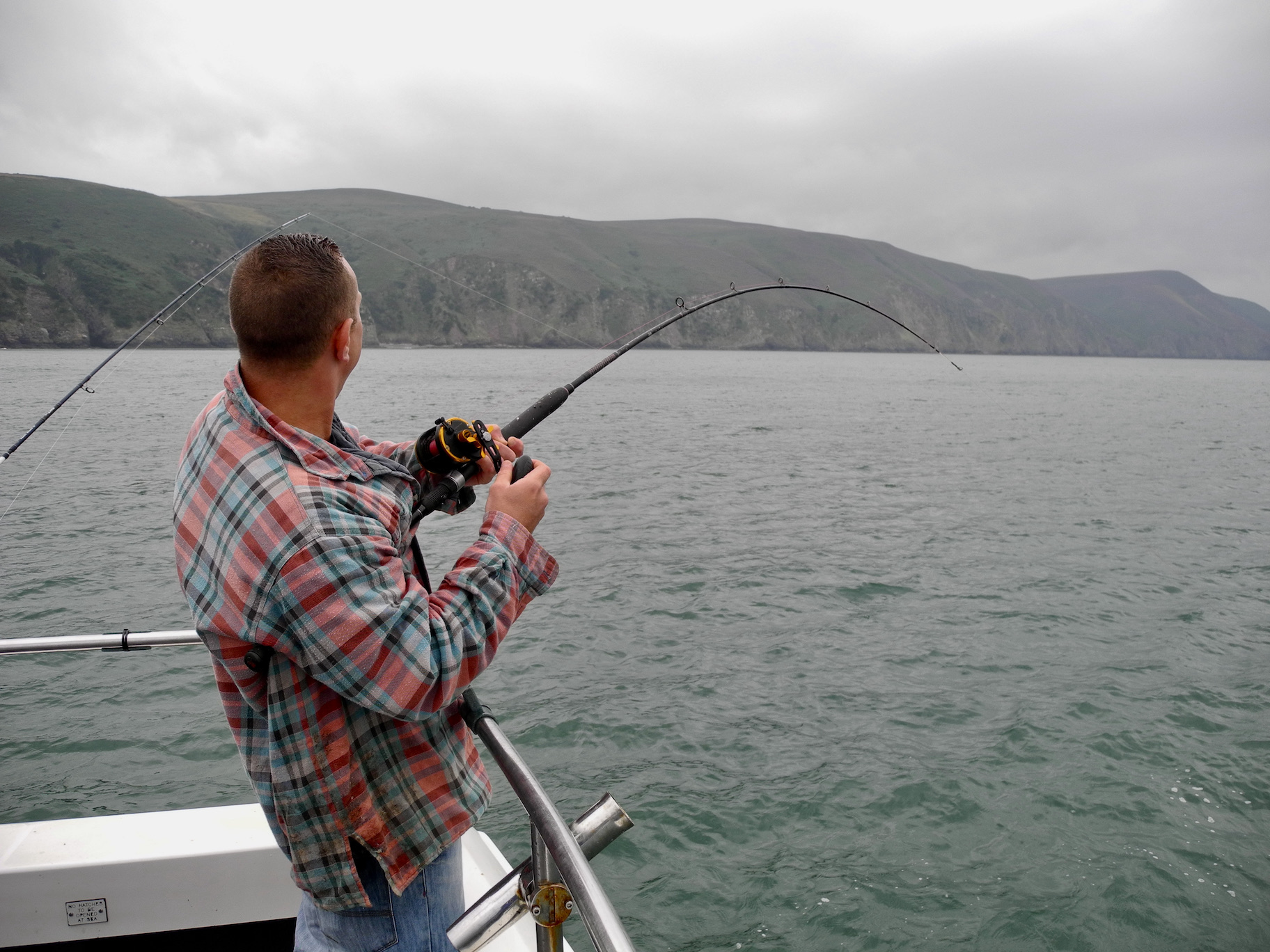
A tope of around twenty five pounds appeared on the surface and was safely tailed by Dans expert wielding of a wire tailor of the type once used for salmon.
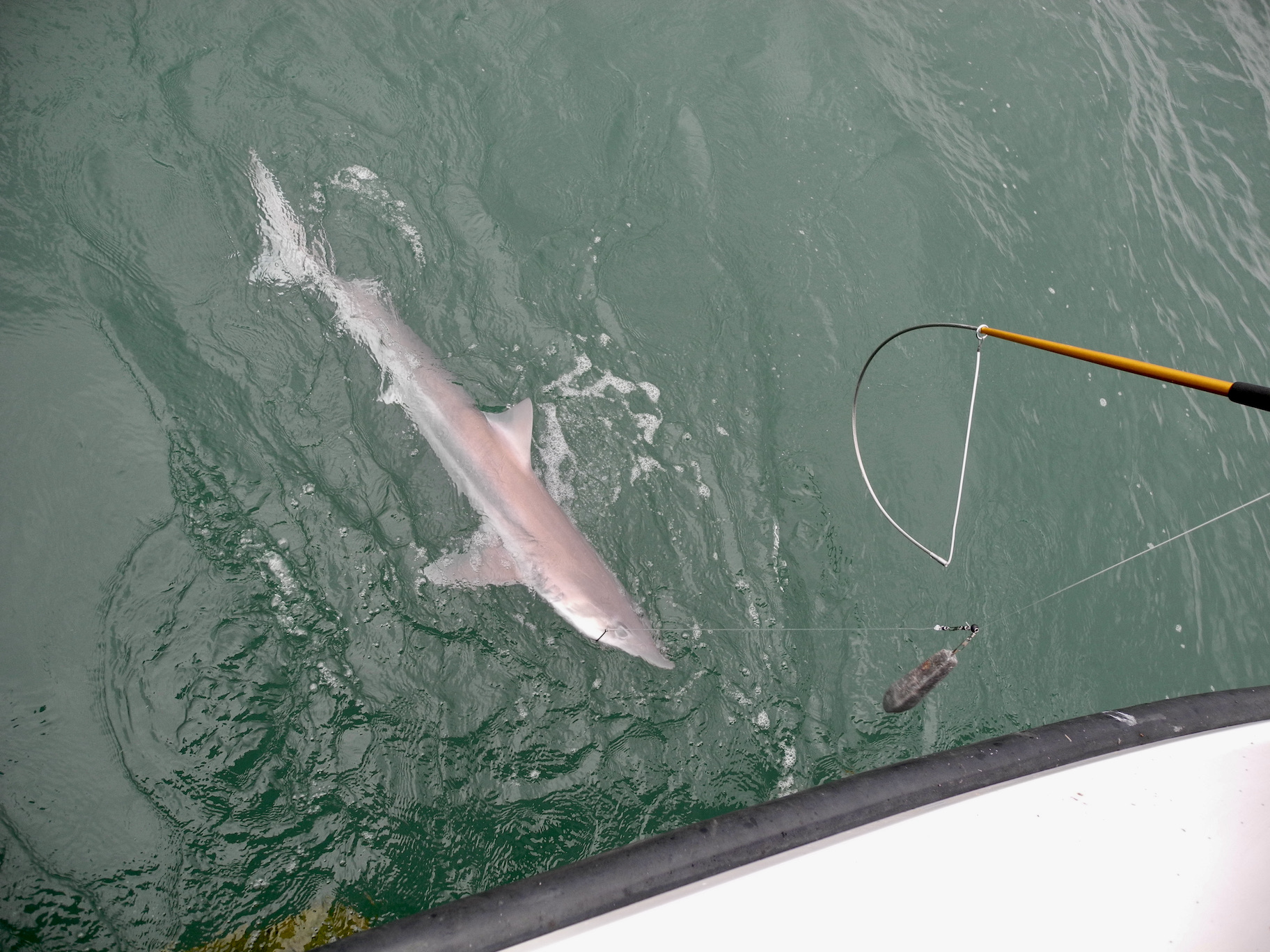
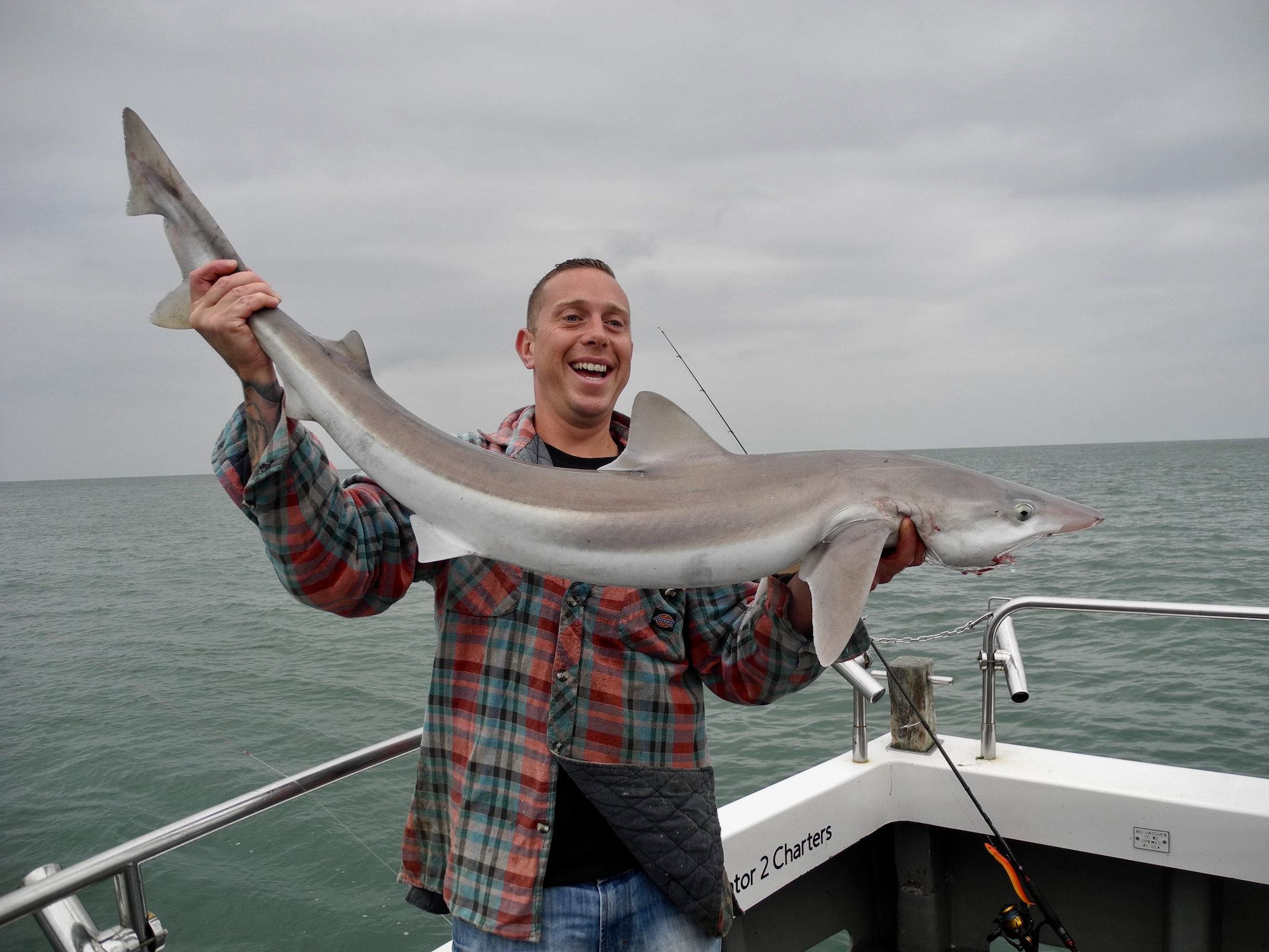

This was a good start and we fished on expectantly for half an hour or so more with just a few dogfish to show.
It was time for a move and so we headed out for a drift over a few wrecks and reefs. It seemed that the bass and pollock were not feeding as our lures were ignored.
With the tide easing all the time we decided to head into the sheltered waters of Woody Bay and fish the sandbanks for ray and tope.
I dropped down a large mackerel bait and flicked out a sliver of mackerel on my spinning rod hoping for a ray or maybe even a turbot.
Toby caught a beautiful micro tope on small hooks.
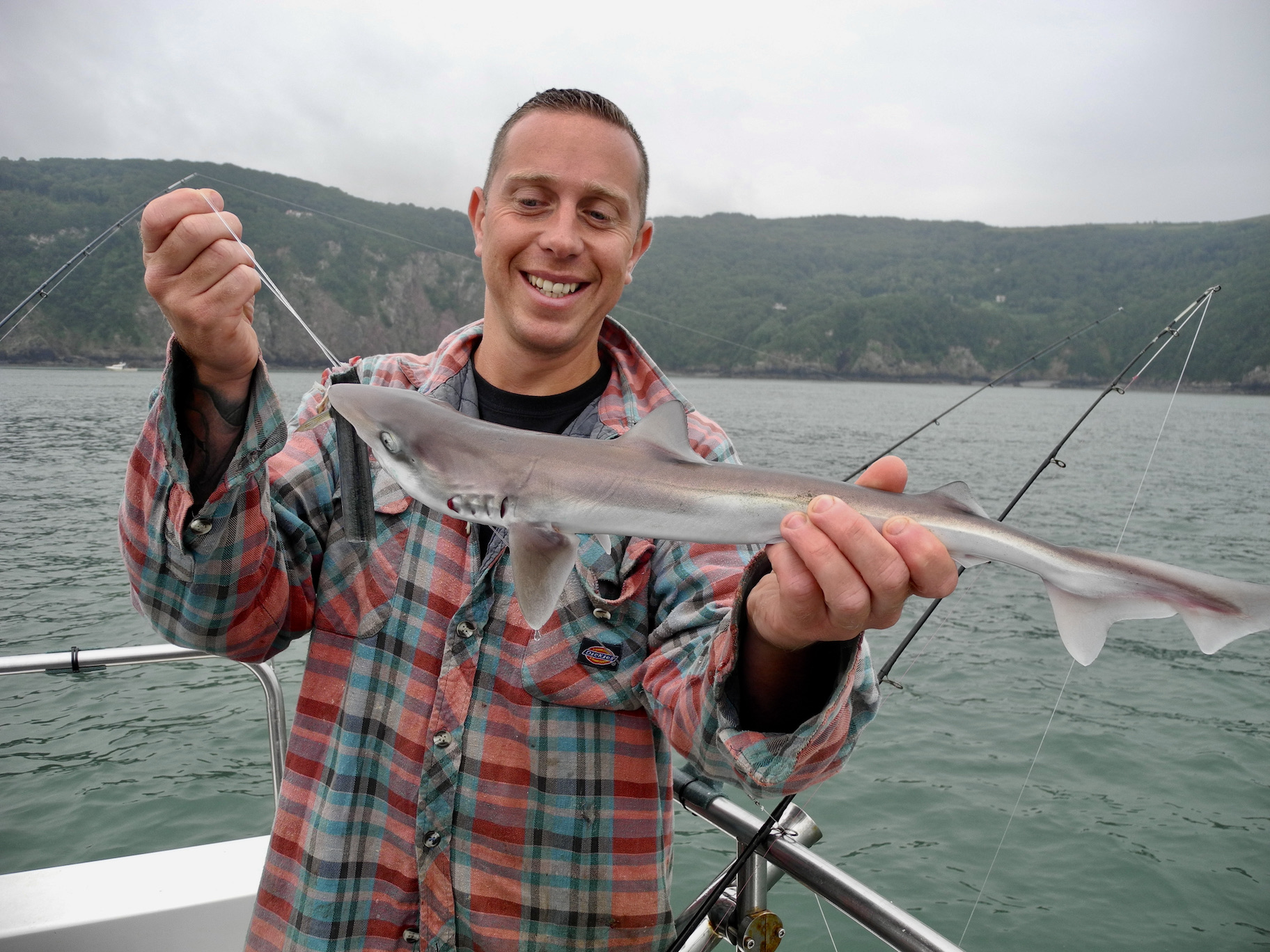
My spinning rod tip nodded a couple of times and I picked up the rod feeling for the fish. Tightening the line I felt a good pull and set the hook. The light rod took on a good curve and line was pulled steadily from the reel. A game of give and take eventually resulted in a pleasing small eyed ray of around 8lb.
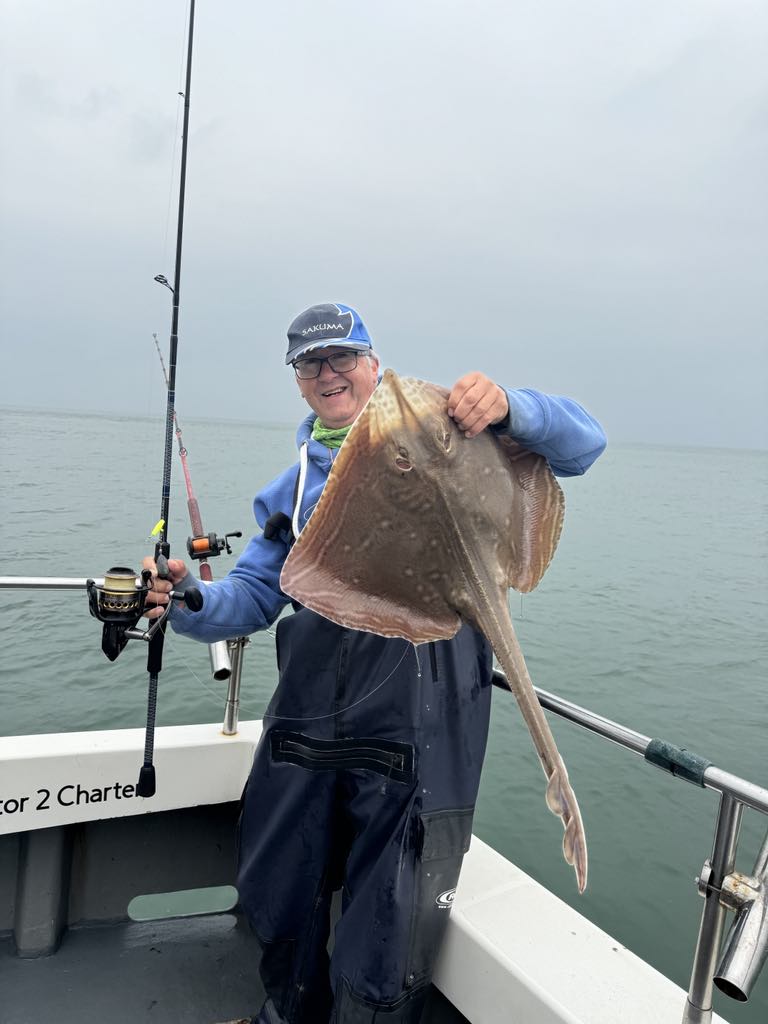
I decided to try a squid bait and on opening the box found that I had previously stashed a whole prawn in with the squid. Worth a try I thought and threaded on the large prawn.
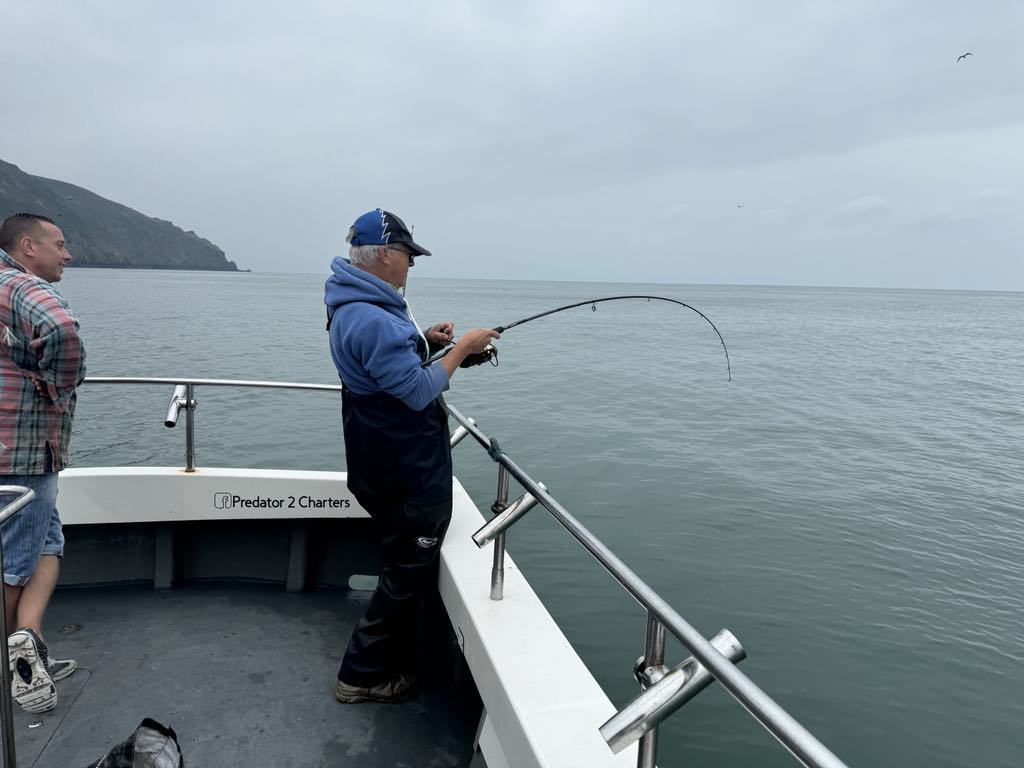
A few minutes later the spinning rod signalled that something had picked up the prawn. After a similar tussle up came another small eyed ray.
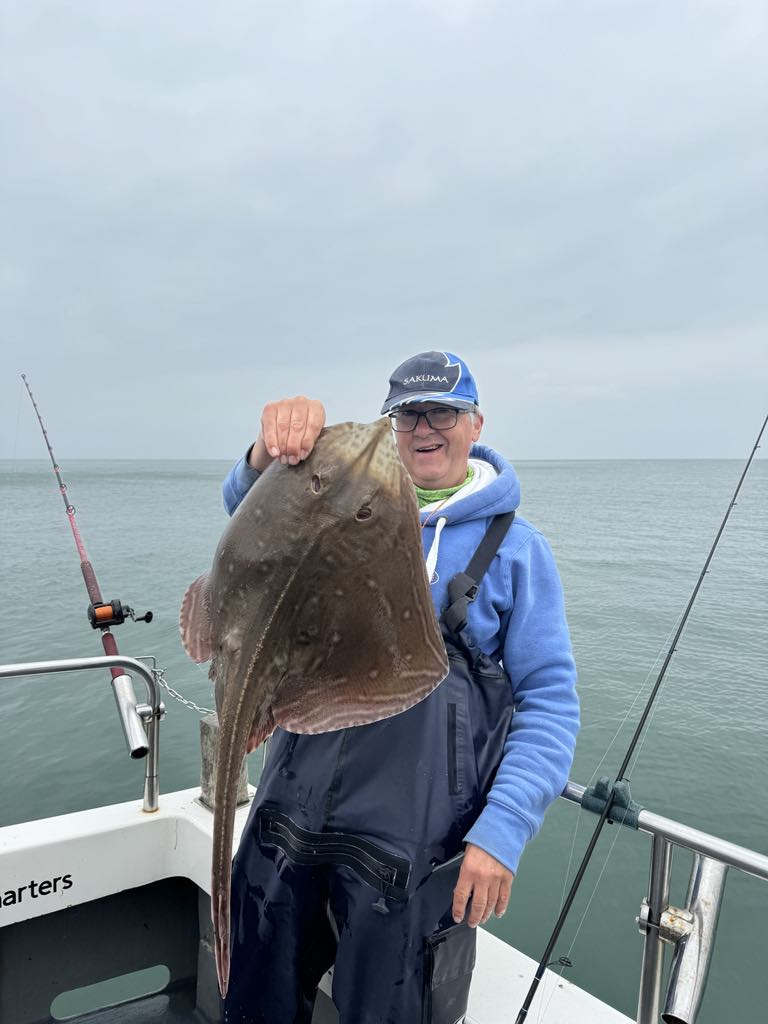
As the tide eased further and no further bites materialised we decided to try out on the reefs again with the lures. A couple of small bass were caught by Dan and Toby on the first drift boosting our confidence. But this proved to be a false dawn as nothing came from the following half a dozen drifts.
We chatted about various options and decided to head back close inshore for the last hour of fishing. By now the wind that was forecast to increase later in the day was gusting strongly arriving earlier than forecast. Fortunately the direction was as predicted and although probably gusting to 40mph plus the sea remained flat.
Dan manoeuvred the boat into position anchoring so that our baits would be trundling back into some rough ground. We both fished two rods a large bait on one and smaller baits on the spinning rods. This was when Toby’s species tactics came into play with size ten hooks employed baited with tiny strips of squid and mackerel. A succession of small pouting and poor cod rattled the rod tip, proof that we were in the rough stuff.
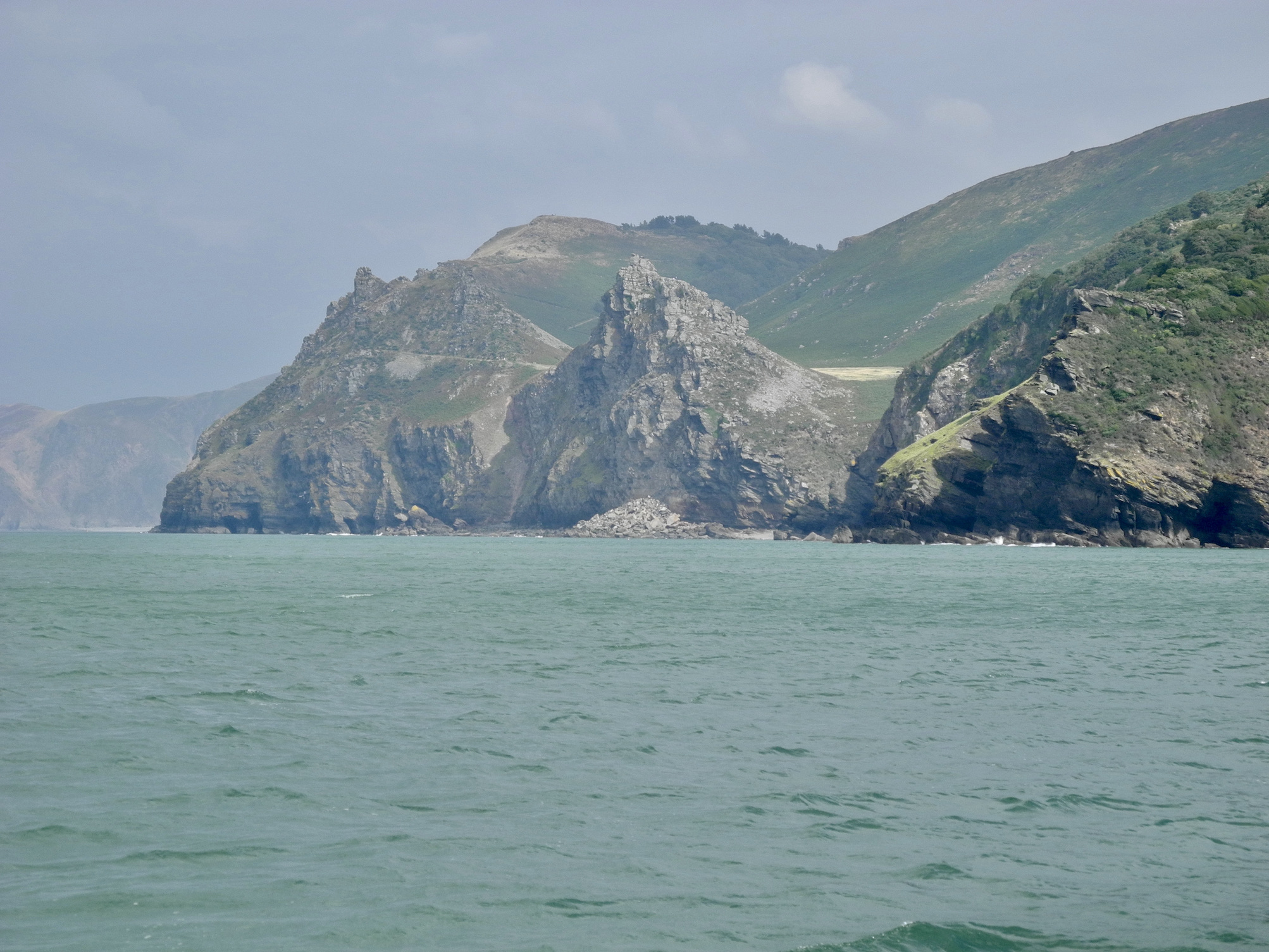
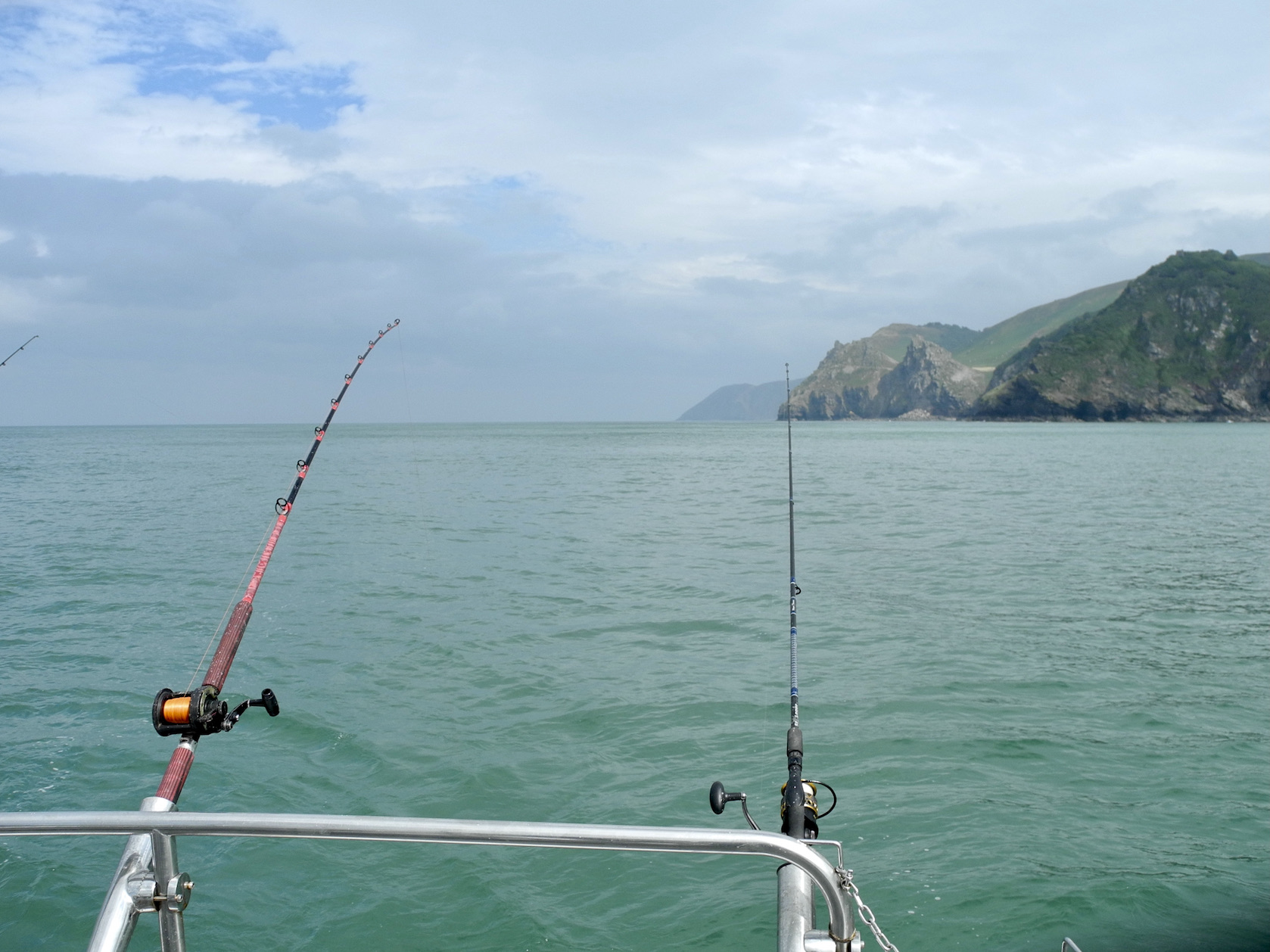
My heavier rod tip plunged over as something grabbed the large mackerel flapper impaled upon the 8/0 hook. Several yards of line were taken from the reel as the rod absorbed powerful lunges of what we guessed correctly was a good sized conger. As is often the case the eel looked larger than the 24lb the scales were to read as it appeared in the clear water behind the boat.
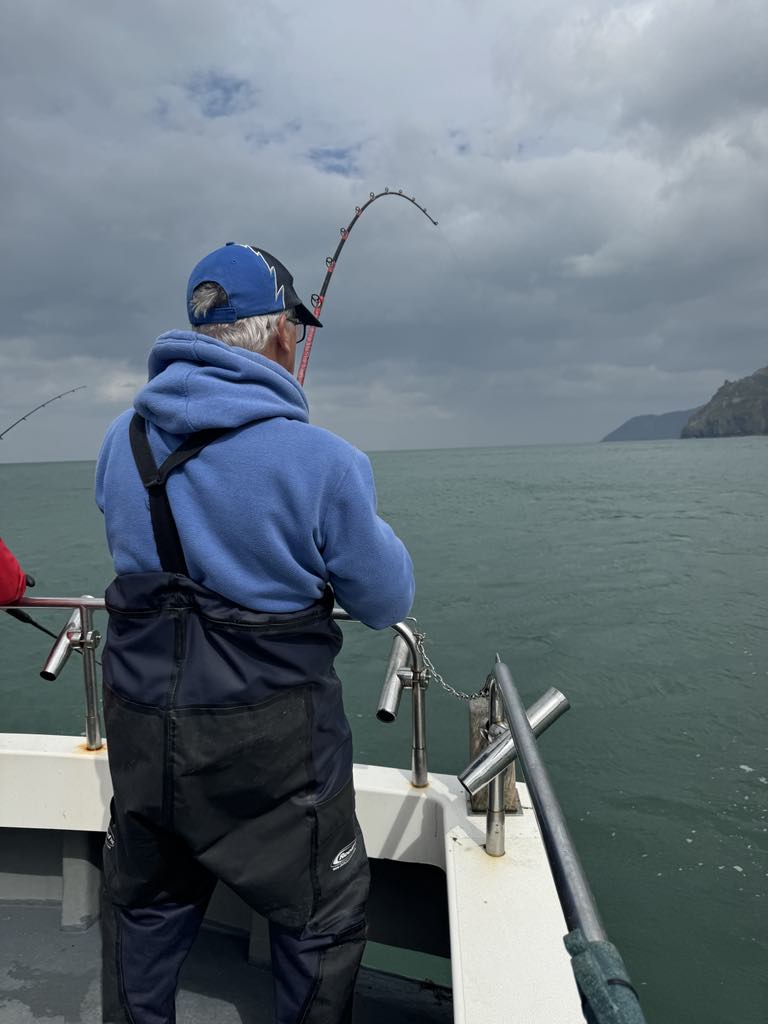
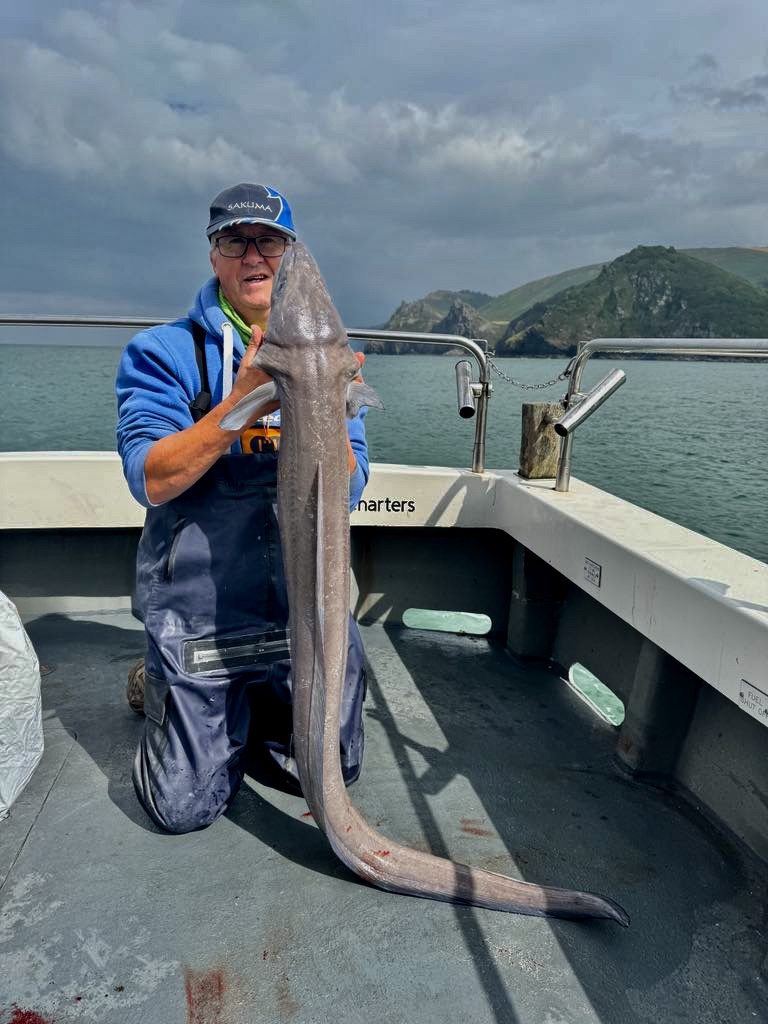
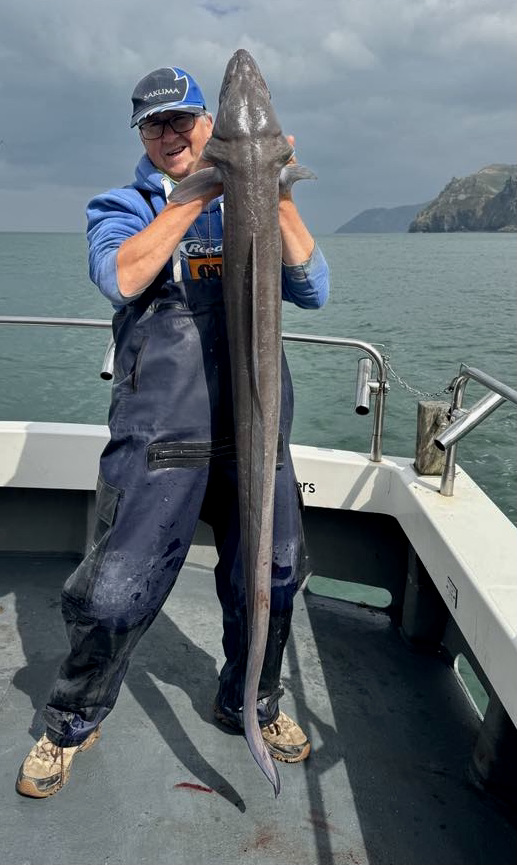
Moments after this Toby hooked into another conger of perhaps 10lb that gave a great account on Toby’s lighter set up.
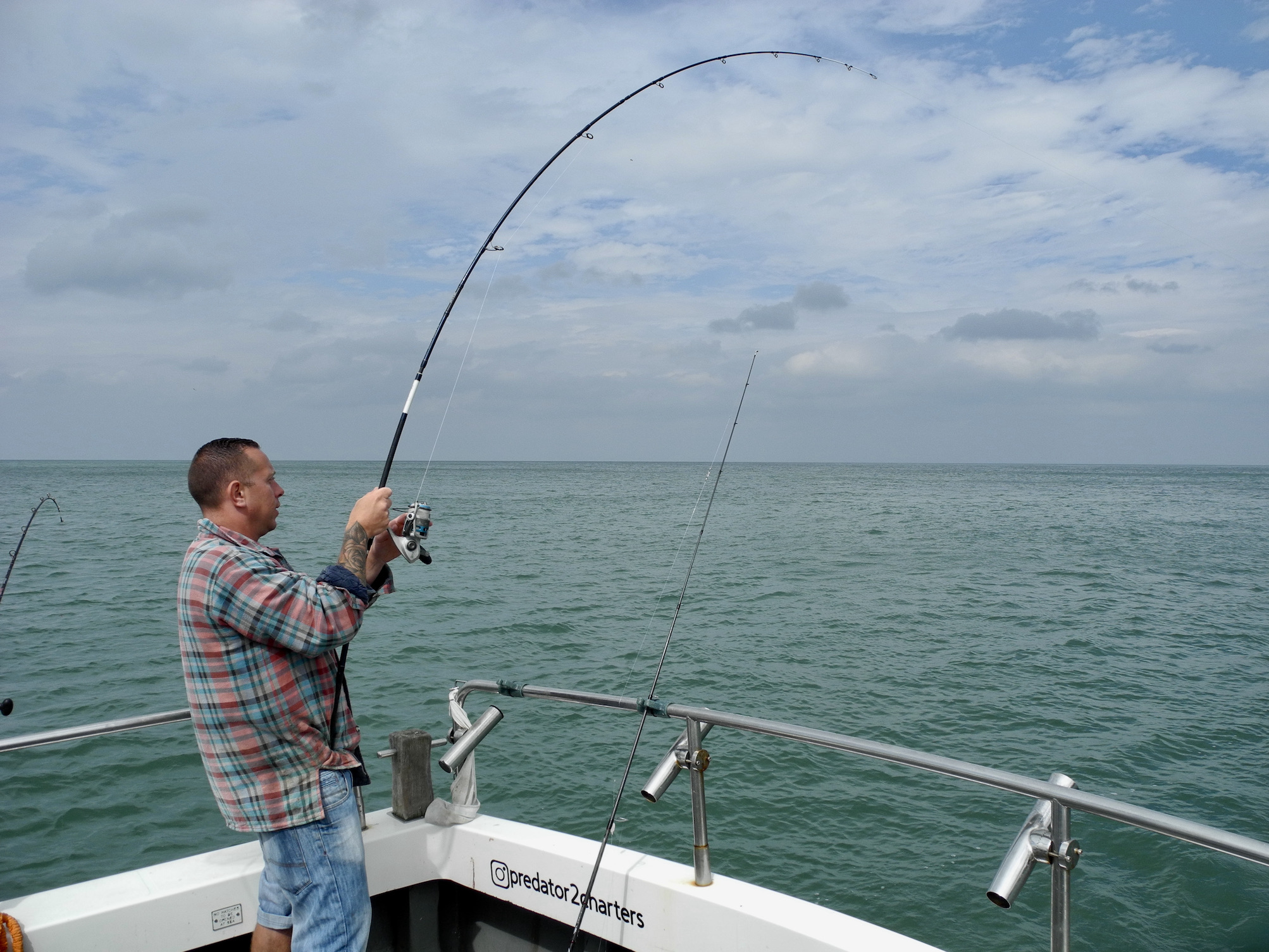
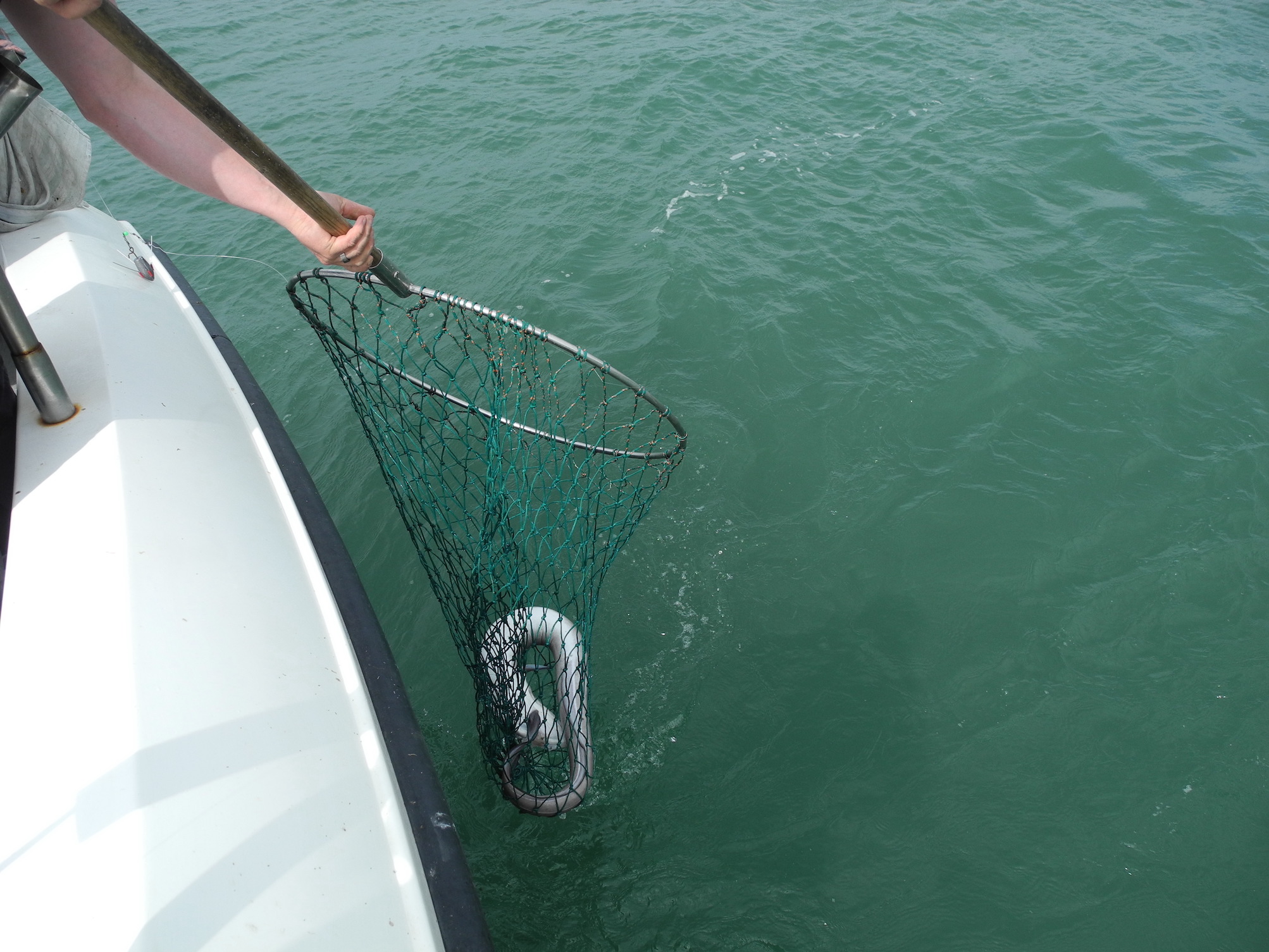

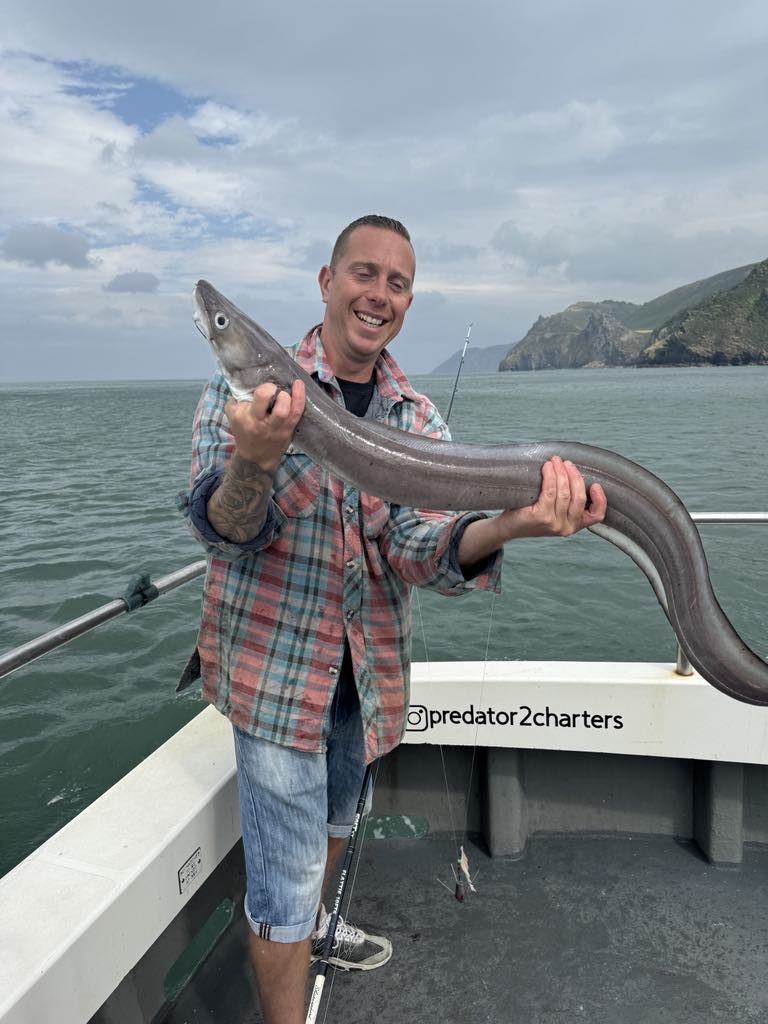
The boat swung to and fro on the anchor as the wind strength continued to increase and bites dried up. It seemed a good time to up anchor and head back to Ilfracombe. The boat cruised comfortably across the windswept waters of the Bristol Channel. I once again admired those towering cliffs and recalled the many tales I had been told of their history. It is well worth seeking out a copy of “ The Hidden Edge of Exmoor” a book that tells of Kester and Elizabeth Webb’s exploration of this fascinating shoreline.
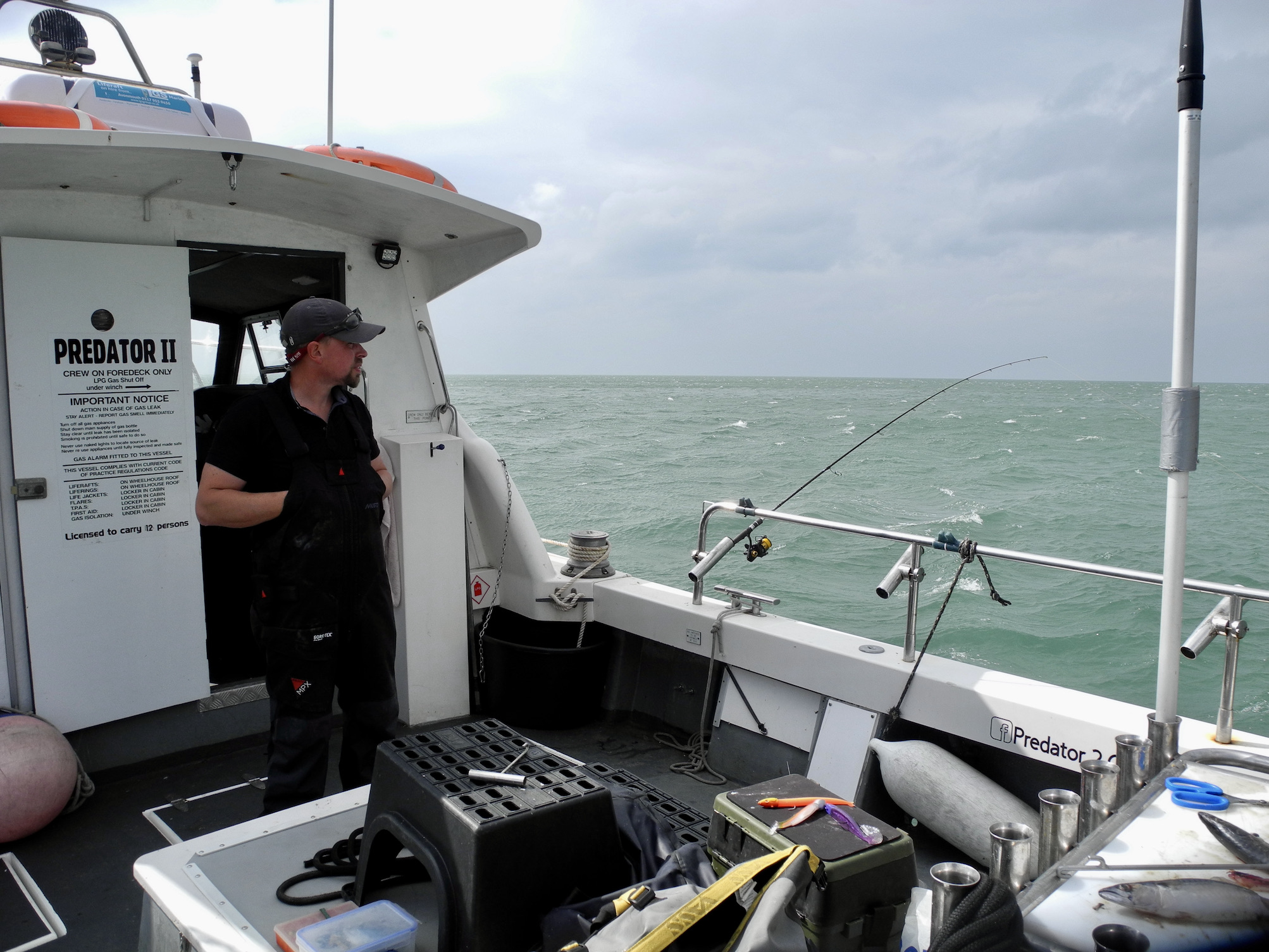
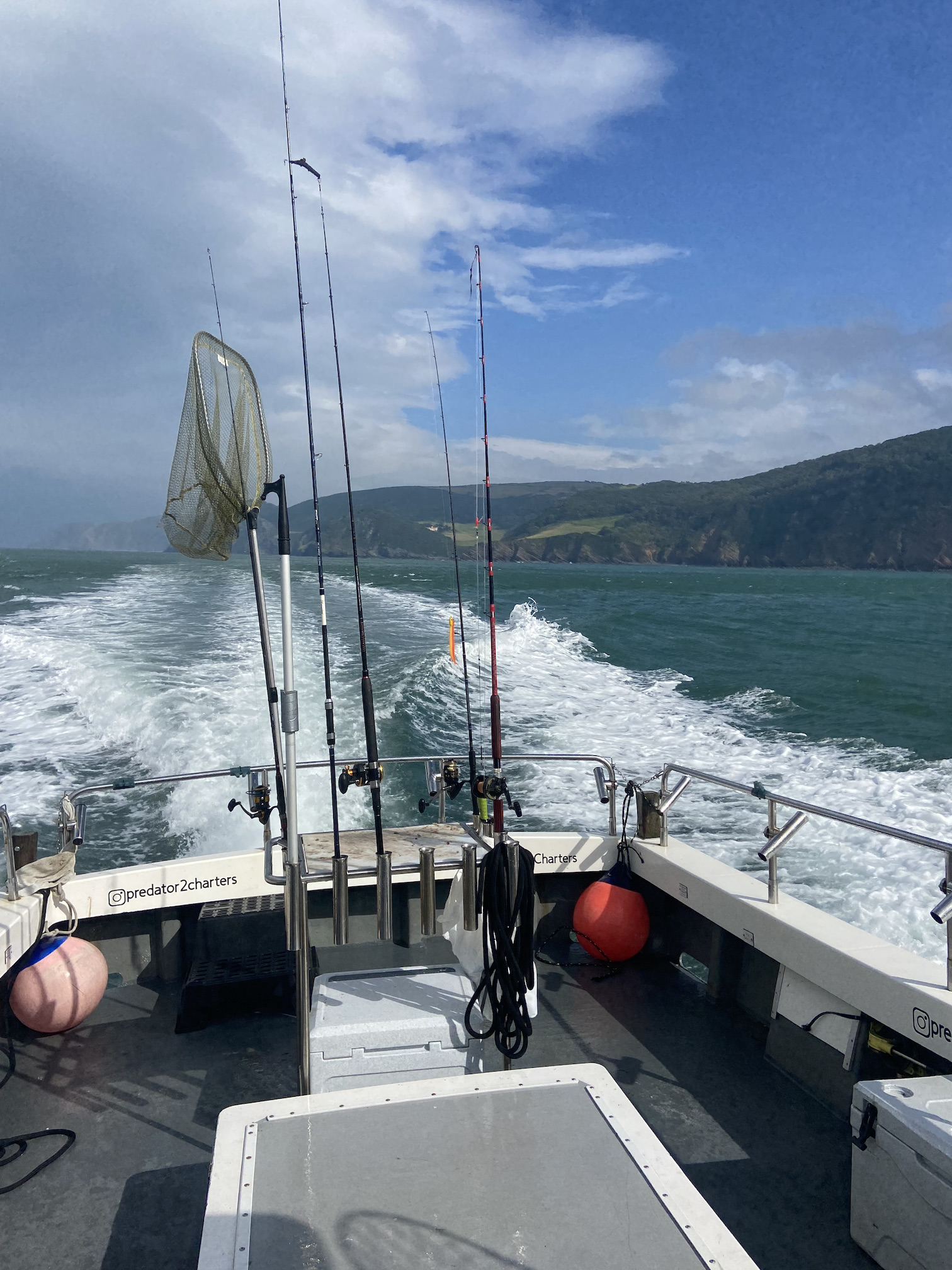
We arrived back in Ilfracombe Harbour thanking skipper Dan Welch for another good day afloat exploring the rich potential of the Bristol Channel. I look forward keenly to the next adventure.

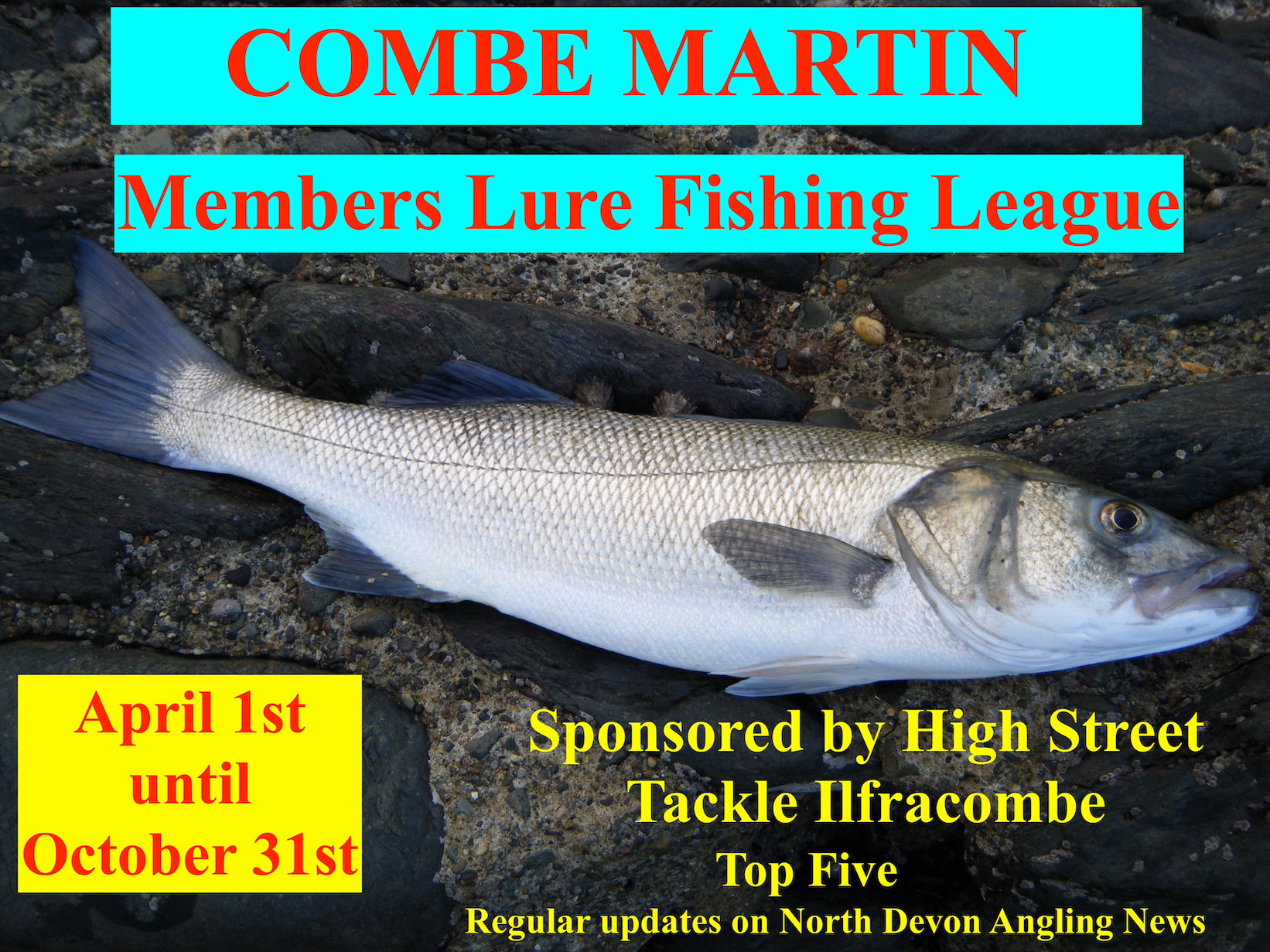
Combe Martin SACs Club members lure fishing league runs from April 1st until October 31st. After a slow start members are now catching some stunning bass from both boat and shore. There are now four members with five bass on the scoreboard. I( Wayne Thomas) have secured a lead after a couple of good sessions on the shore adding a fine bass of 75cm to my tally along with bass of 60cm and 58cm. All fish were caught using mega-bass spindle worms.
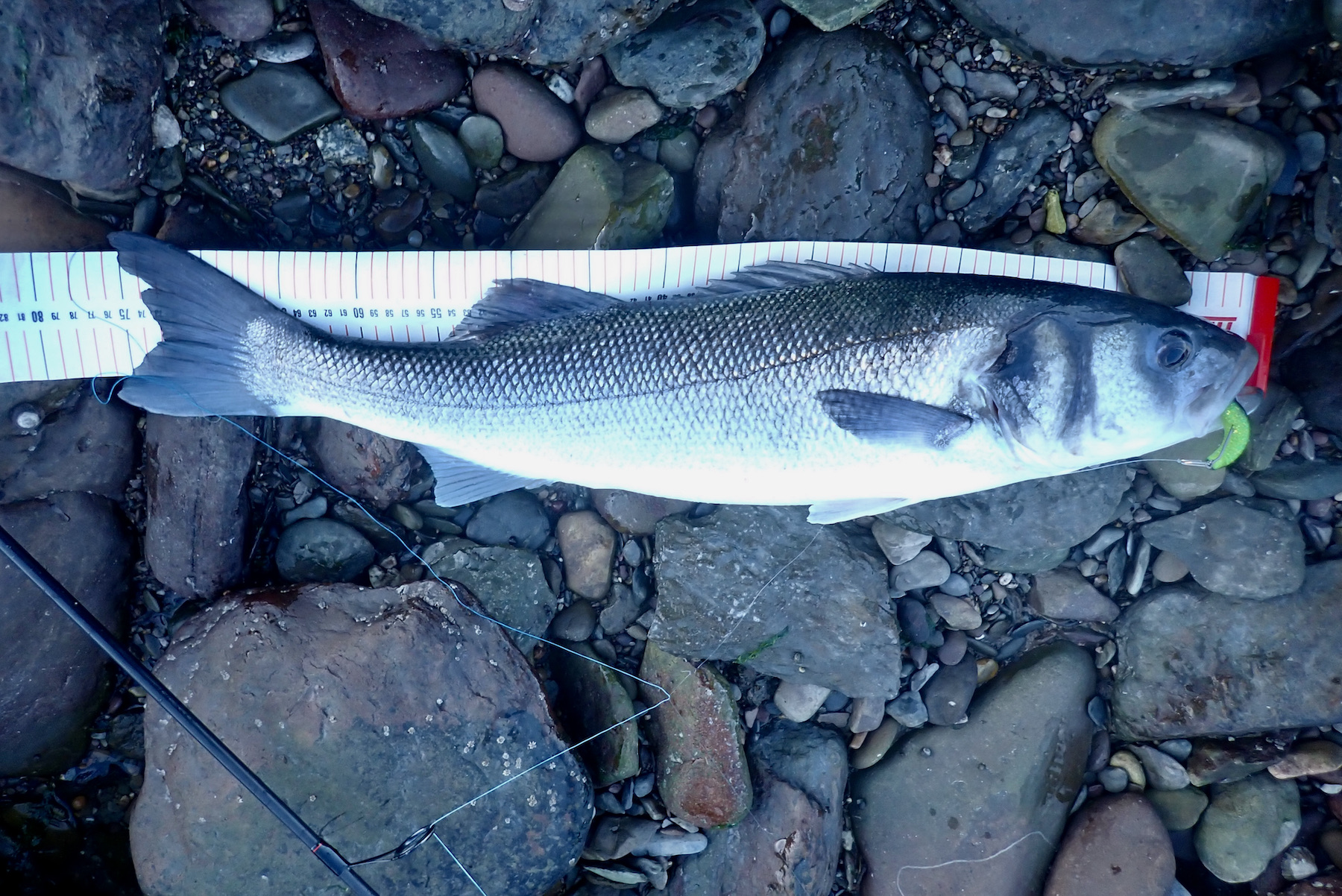
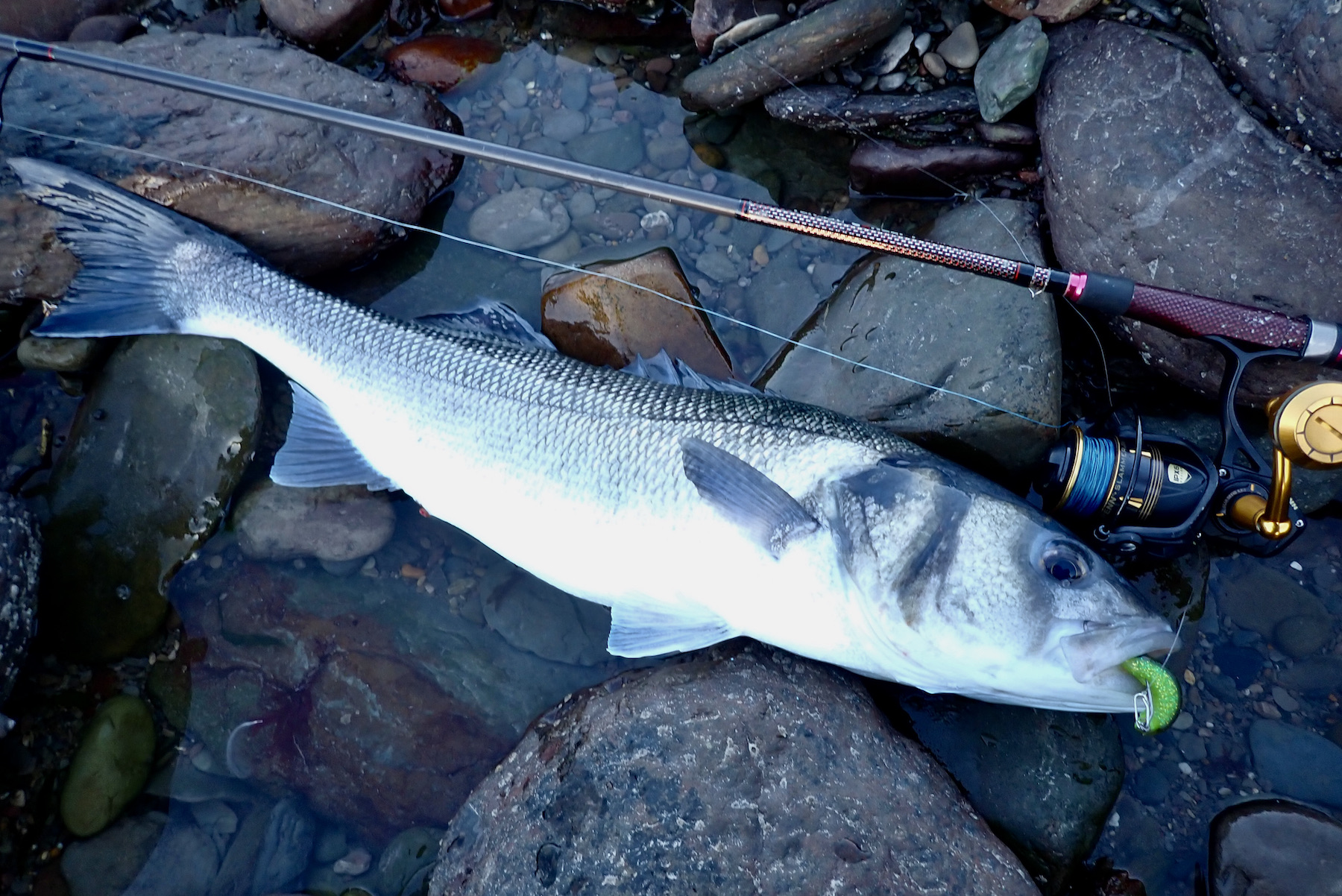
Present standings are :-
Wayne Thomas – Bass – 75cm, 60cm, 58cm, 57cm, 56cm Total – 306cm
Ross Stanway – Bass 67cm, 58cm, 56cm, 56cm, 56cm Total – 293cm
Reece Woolgar – Bass 62cm, 59cm, 58cm, 57cm, 56.5cm Total – 292.5cm
Daniel Welch – 63cm, 55cm, 54cm, 50cm, 48cm Total – 270cm
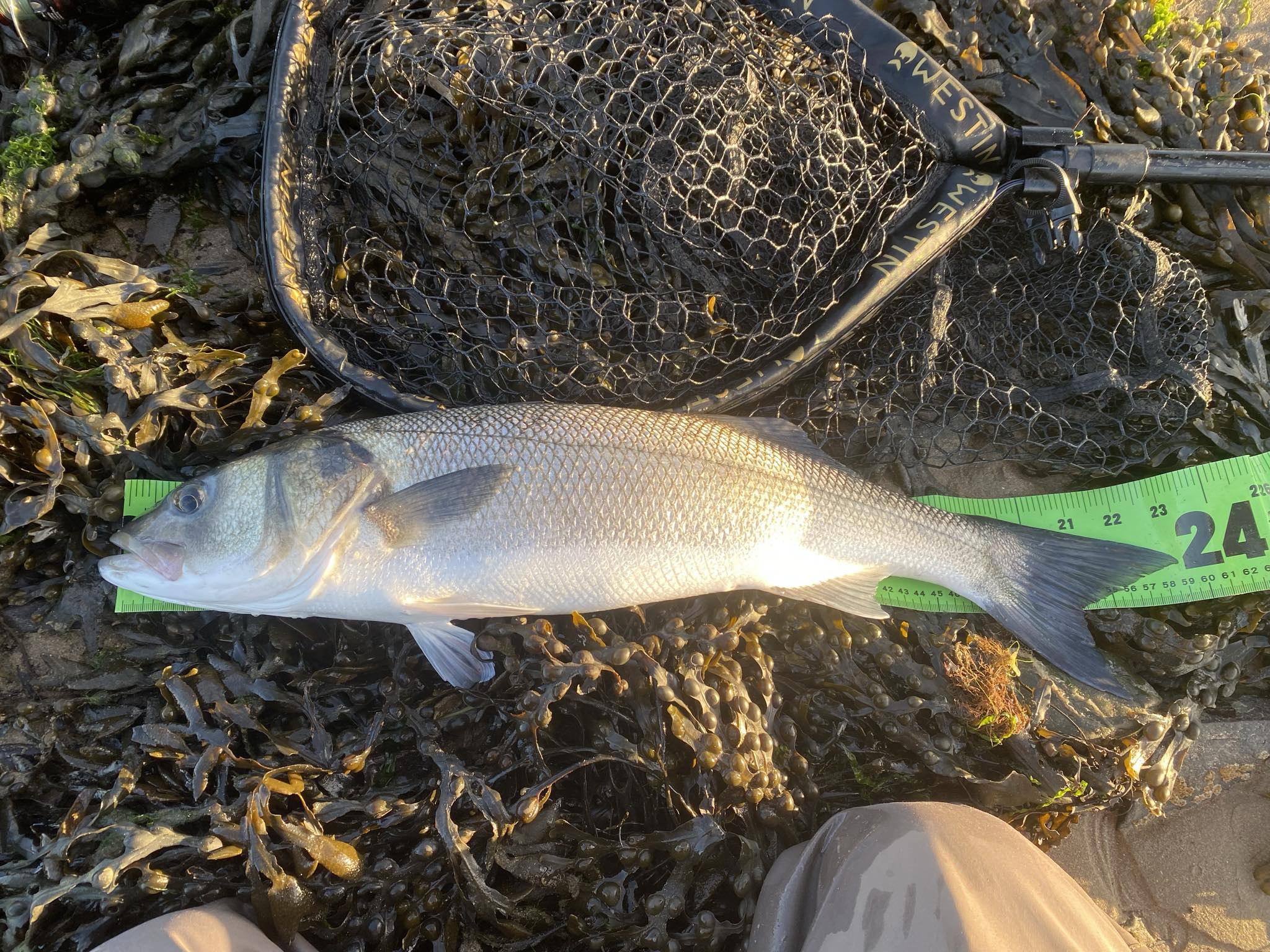
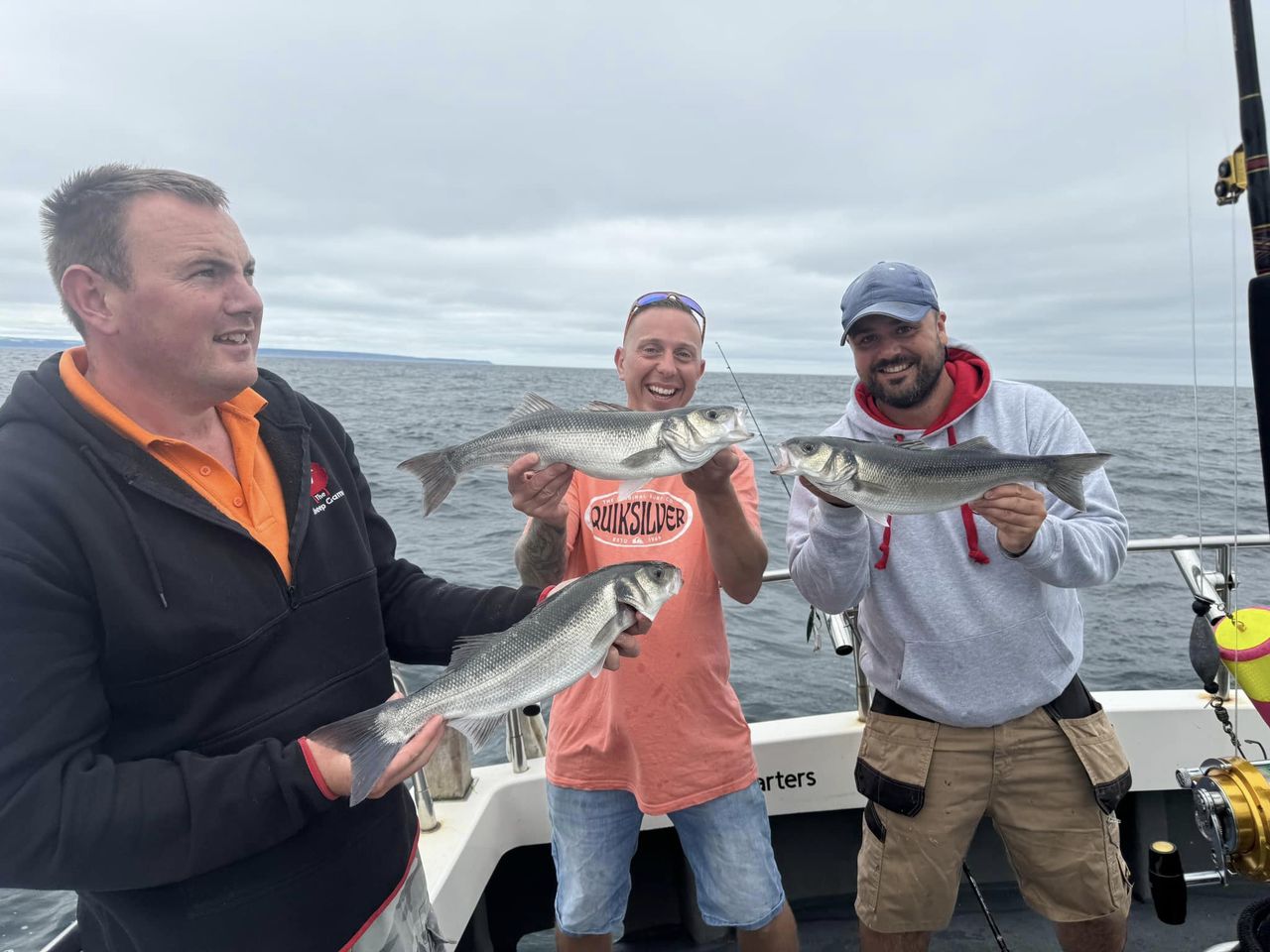
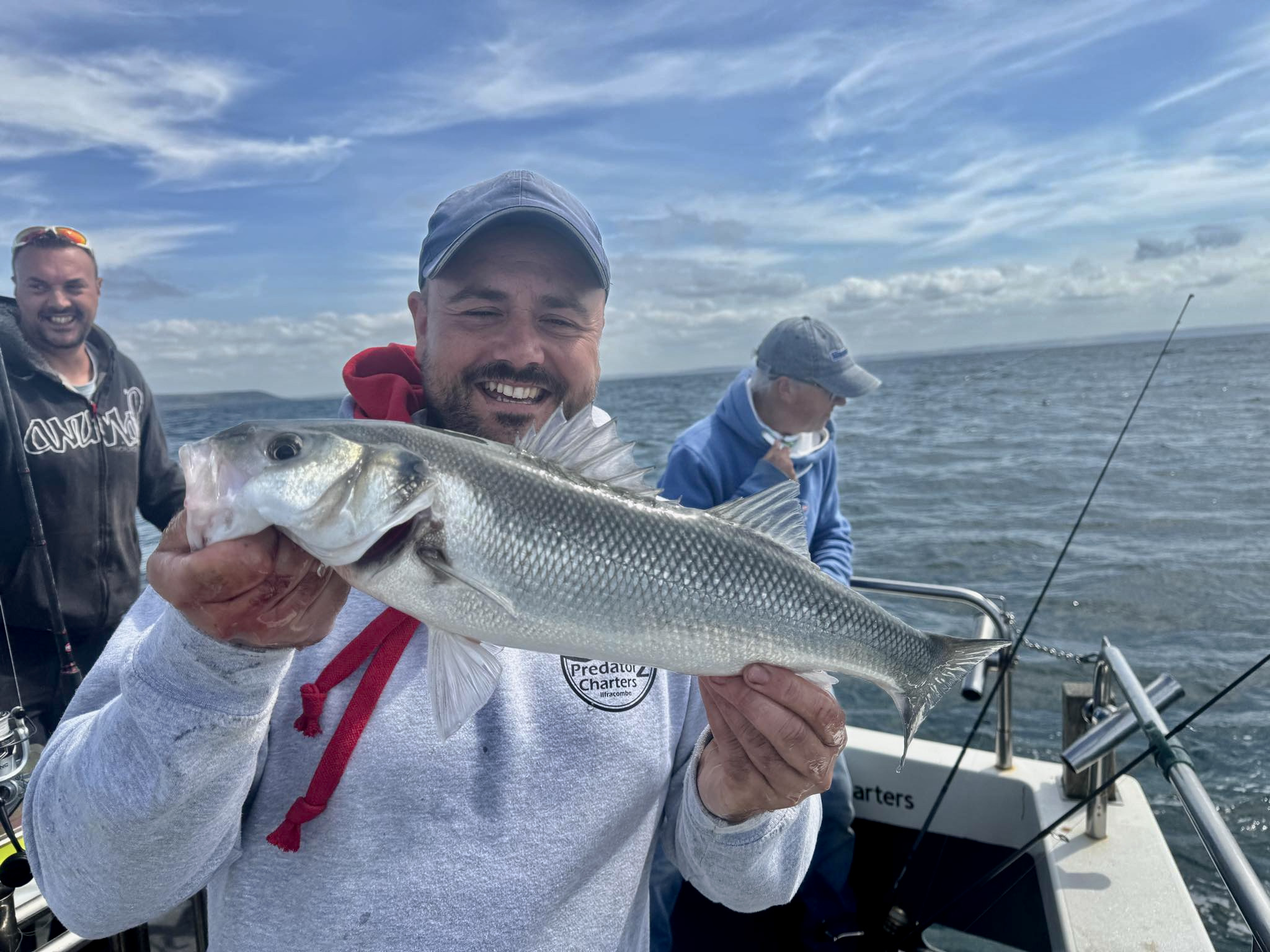






Daniel Welch is building experience on Predator 2 Charters taking friends to marks off the North Devon Coast intending to extend to wider charters next season. At present Dan is taking customers on short range charter trips out of Ilfracombe.
( Below) A few fish caught on the latest mates day out trip on Predator 2

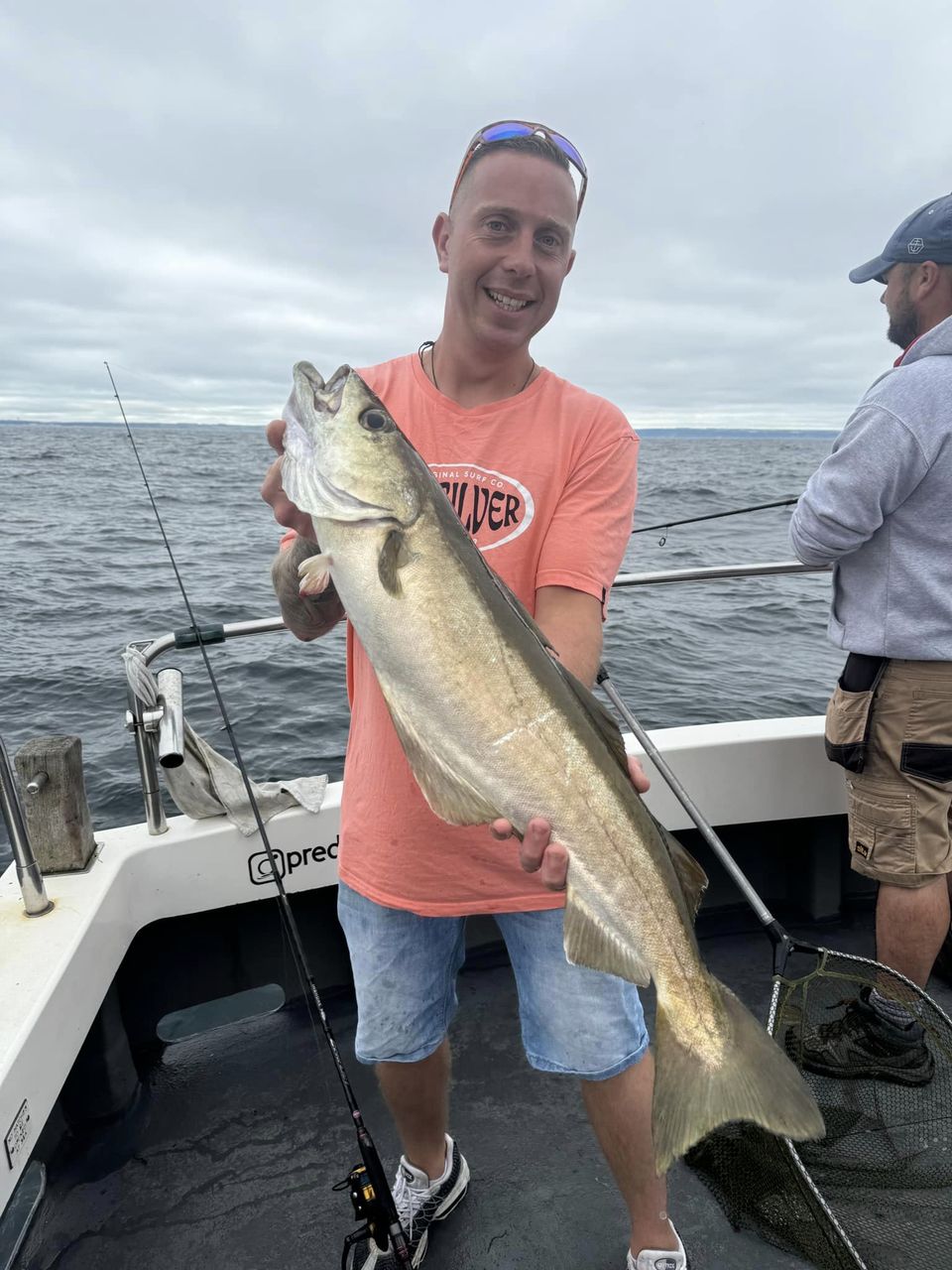
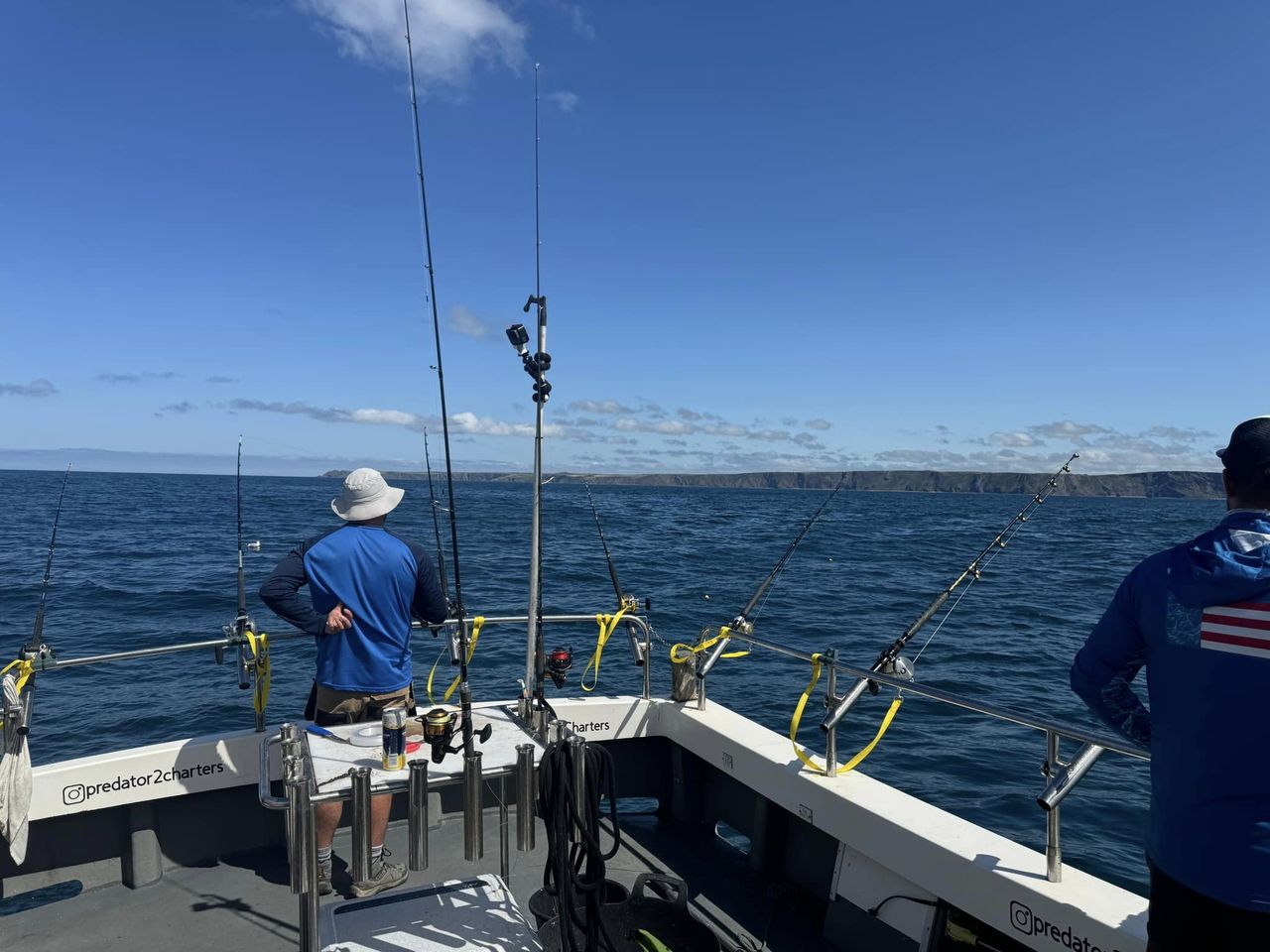
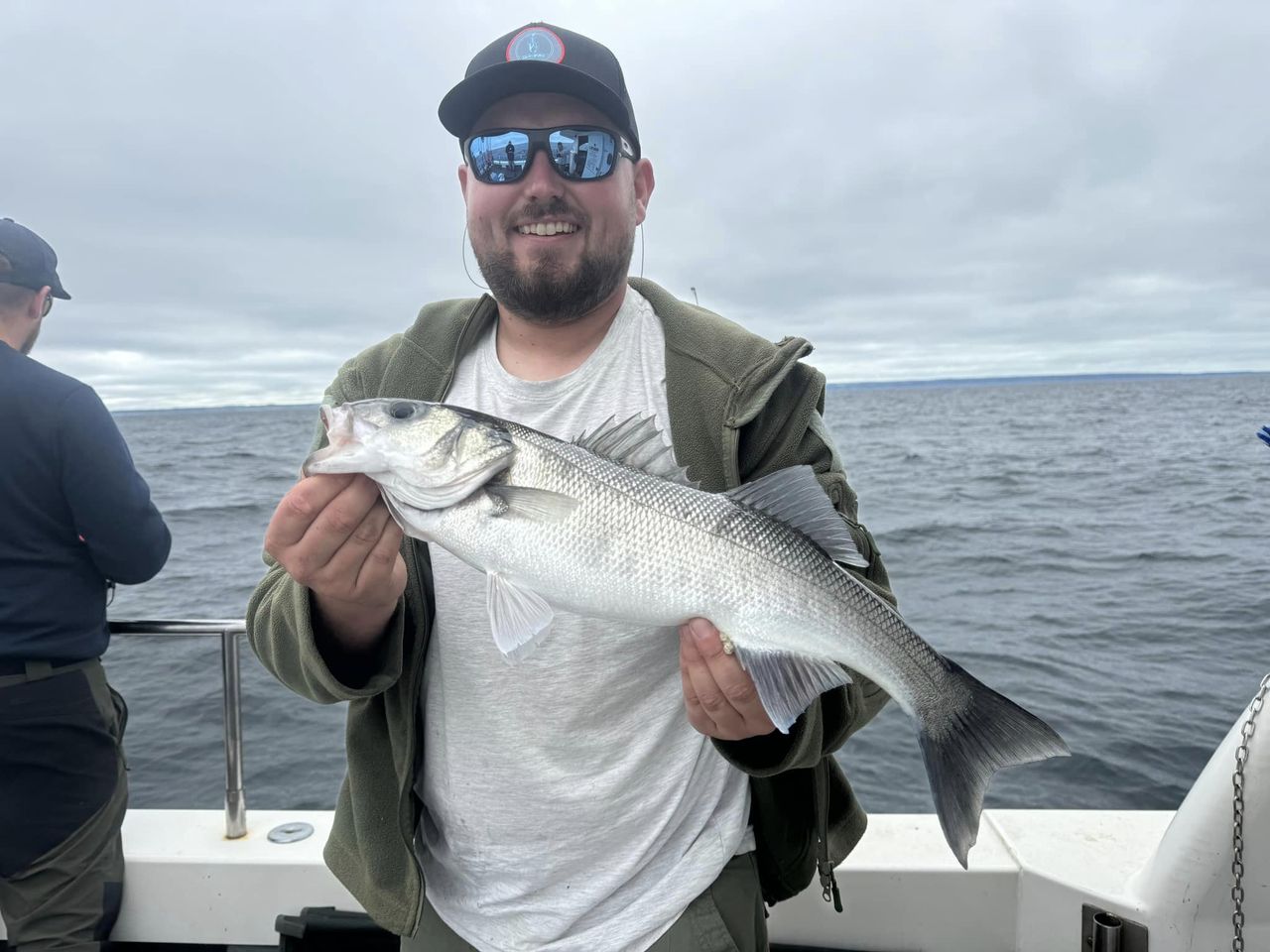
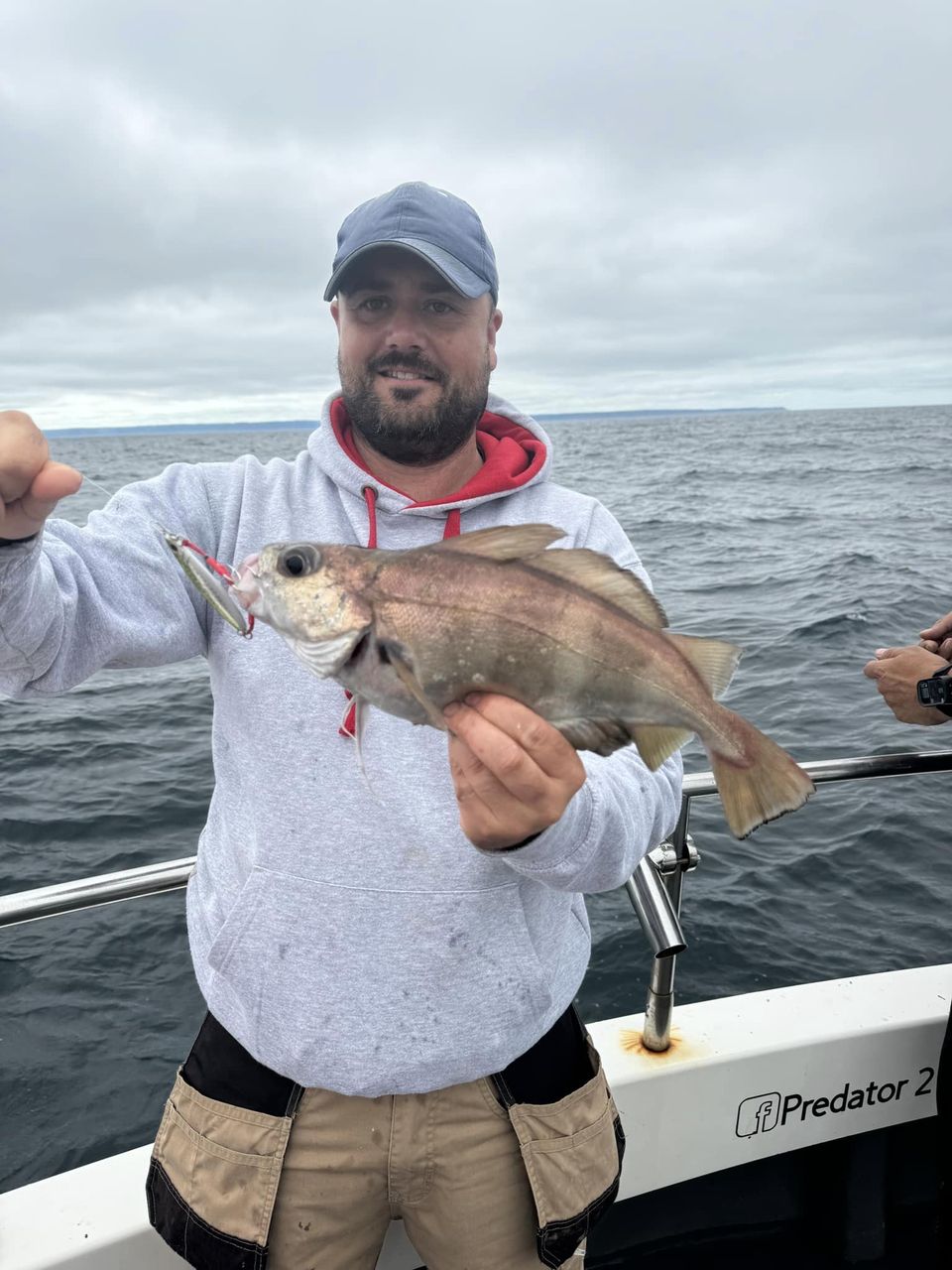
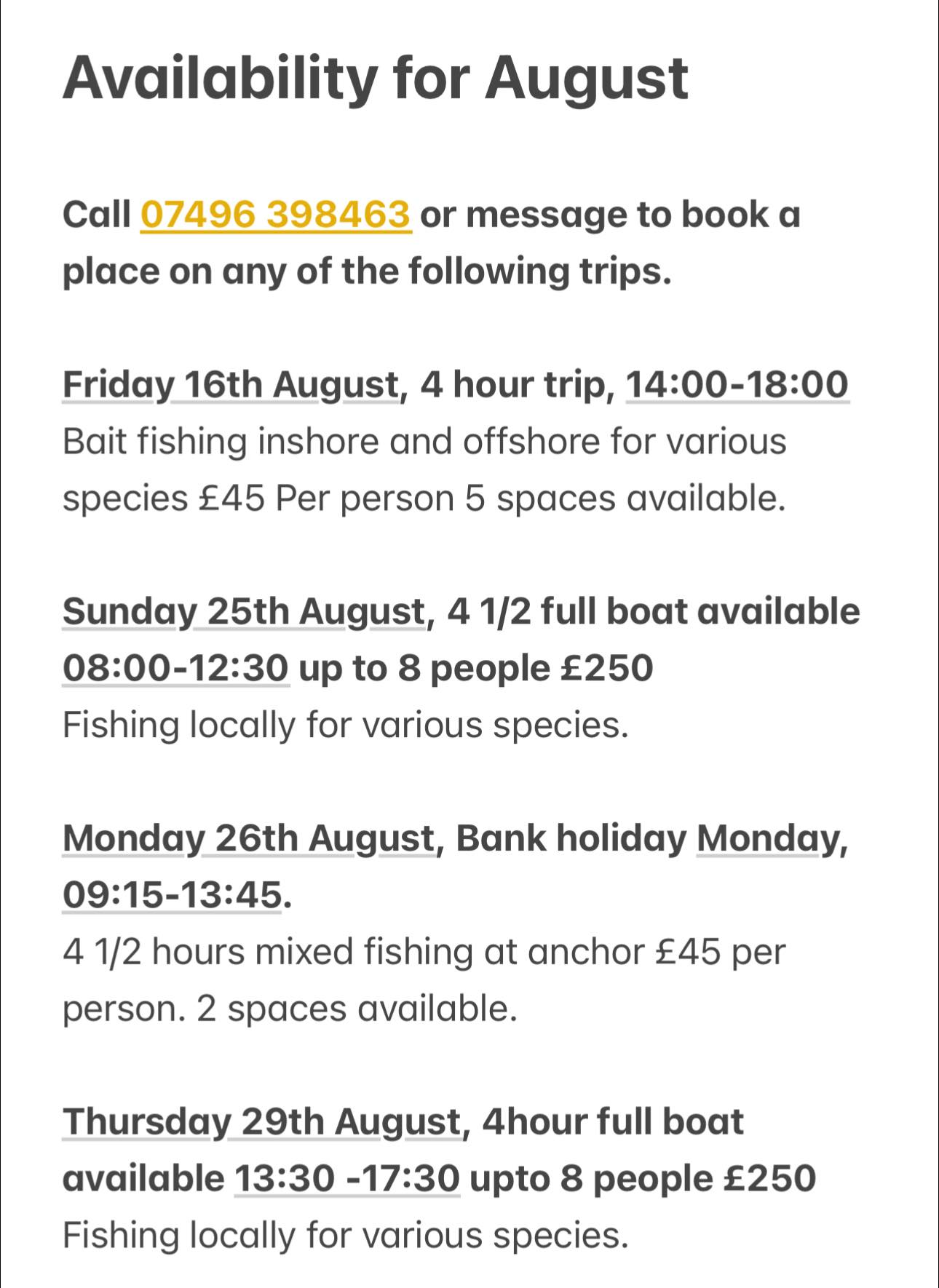
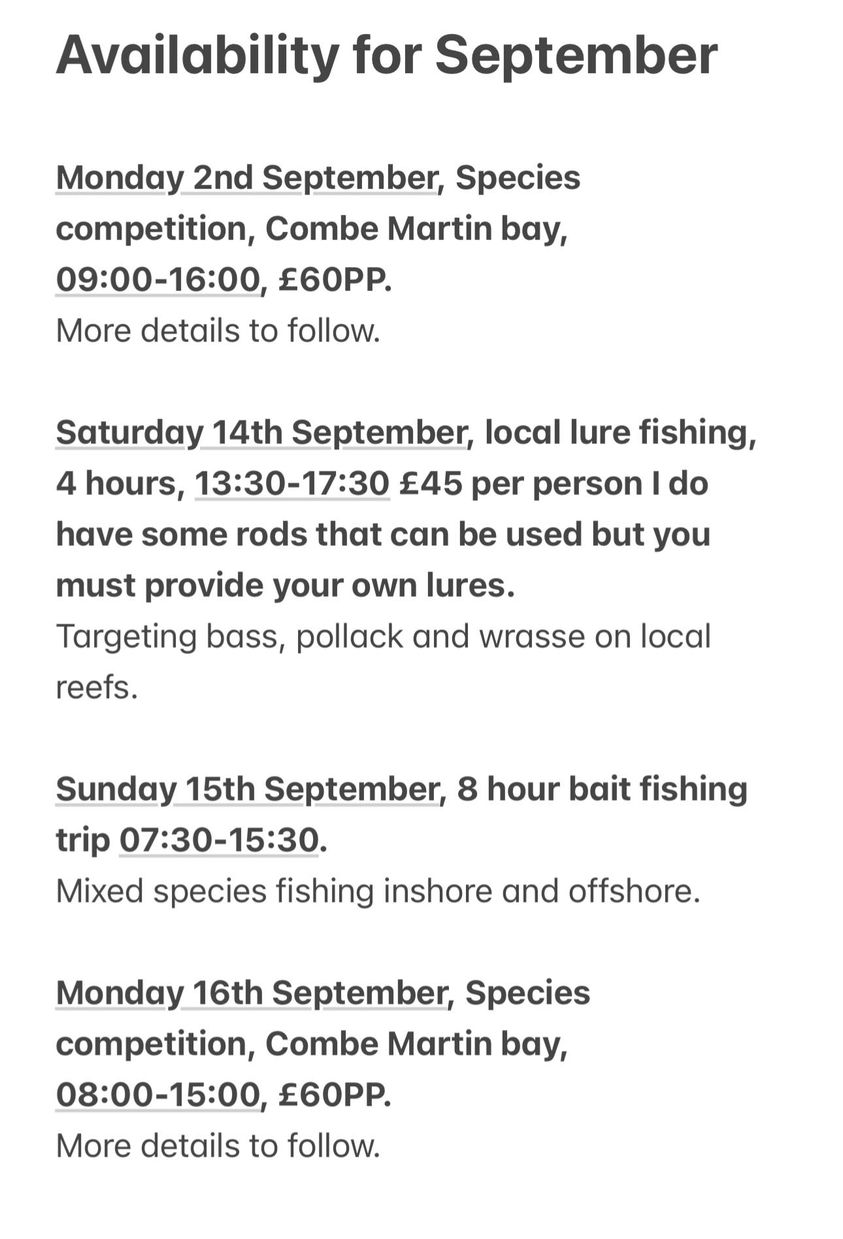
Nice little video Paul has put together from the trip out with a few mates at the weekend. Hopefully we can get some more over the coming weeks and months. Give his you tube channel ilfracombe fishing a like and subscribe. He also makes probably the best burgers and special boxes Bayside Burger Bar so if your hungry after a fishing trip you know where to go. .
Combe Martin SAC are hosting their annual fun fishing event on Ilfracombe Pier on Sunday September 1st. This annual event coincides with the Sea-Ilfracombe Festival and is always fun promoting fishing for young anglers accompanied by parents or guardians. Special guests to be confirmed mingle with the public to discuss issues that relate to the sea angling community. The fun fishing is for most species caught with prizes provided by sponsors High Street Tackle, Barnstaple Bait and Tackle and Ilfracombe Aquarium.



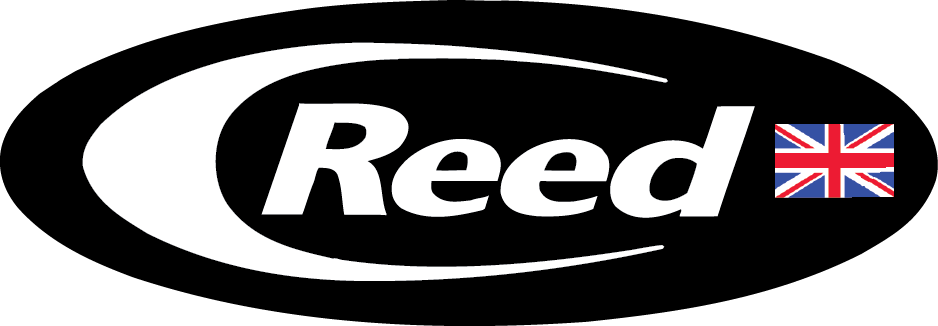
Late summer sees the arrival of a wide variety of species with red mullet amongst the most colourful. Kevin Legge caught a brace of these handsome fish the largest of the two weighing 10.5oz won CMSAC’s latest club match. kevin hold the clubs club record for the species with a 1lb 10oz fish caught in 1989. The clubs specimen size is 1.25oz.
